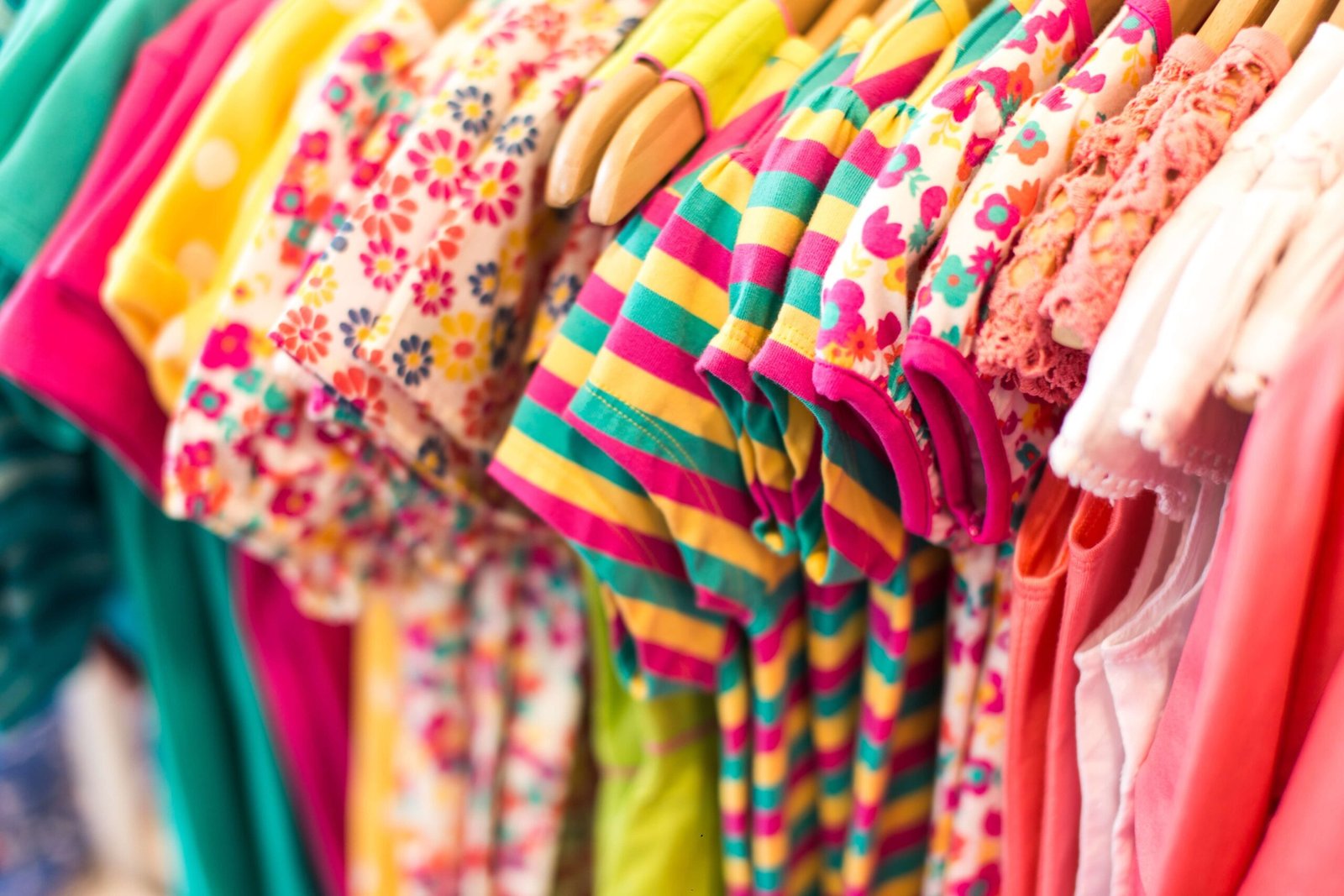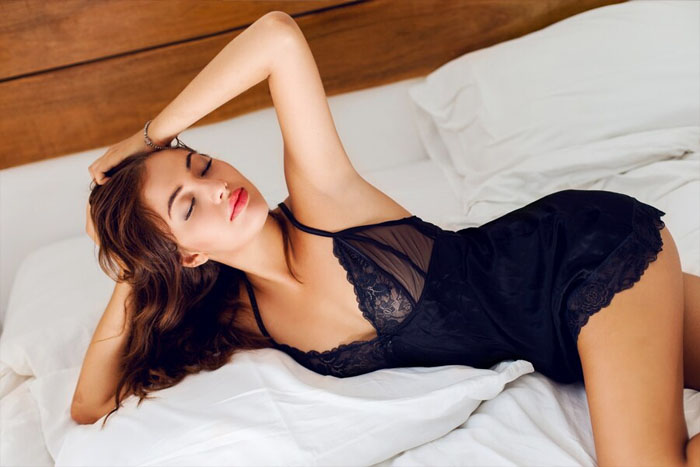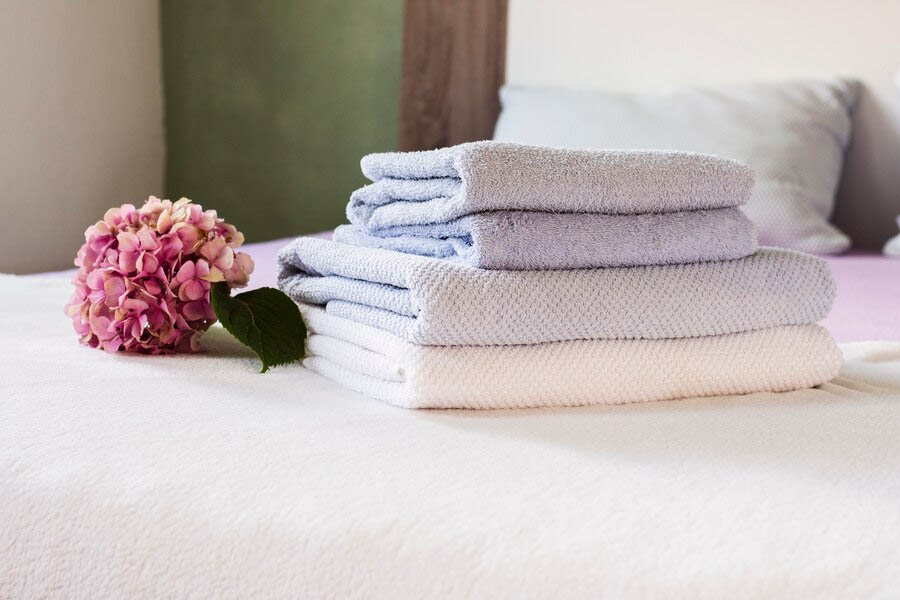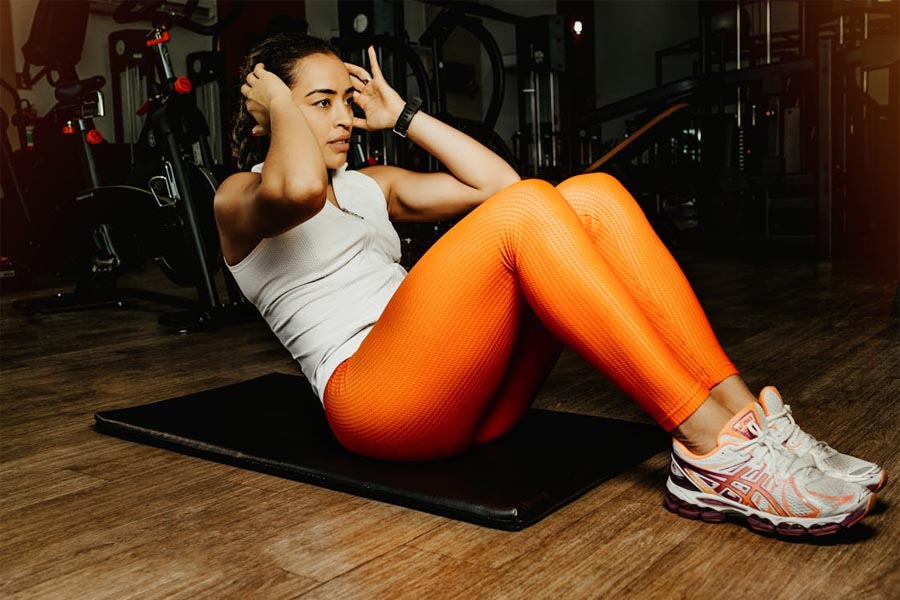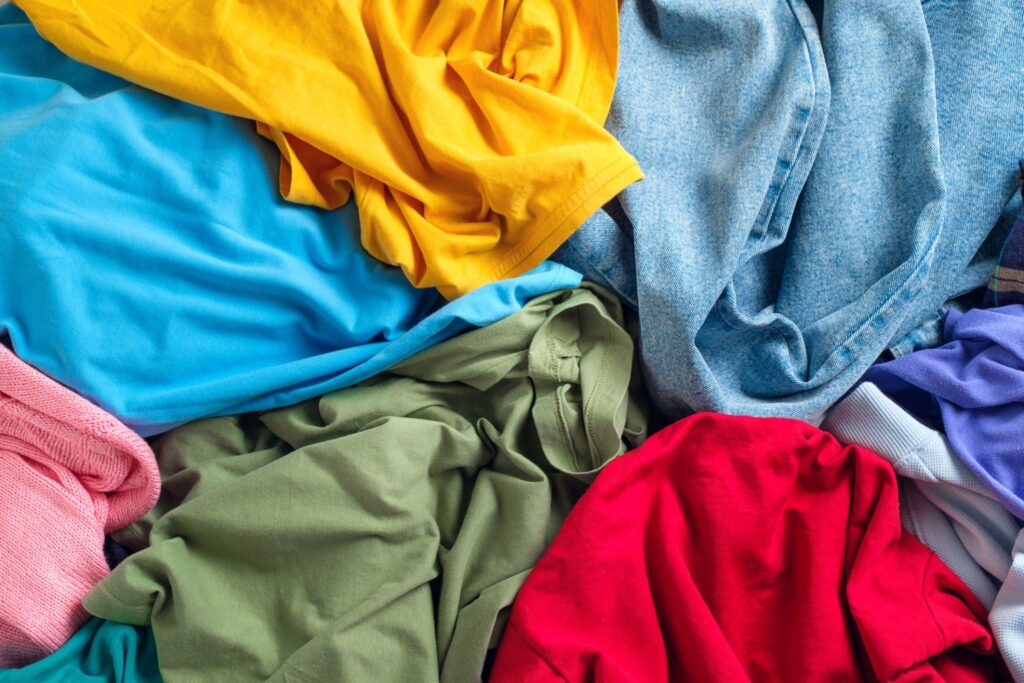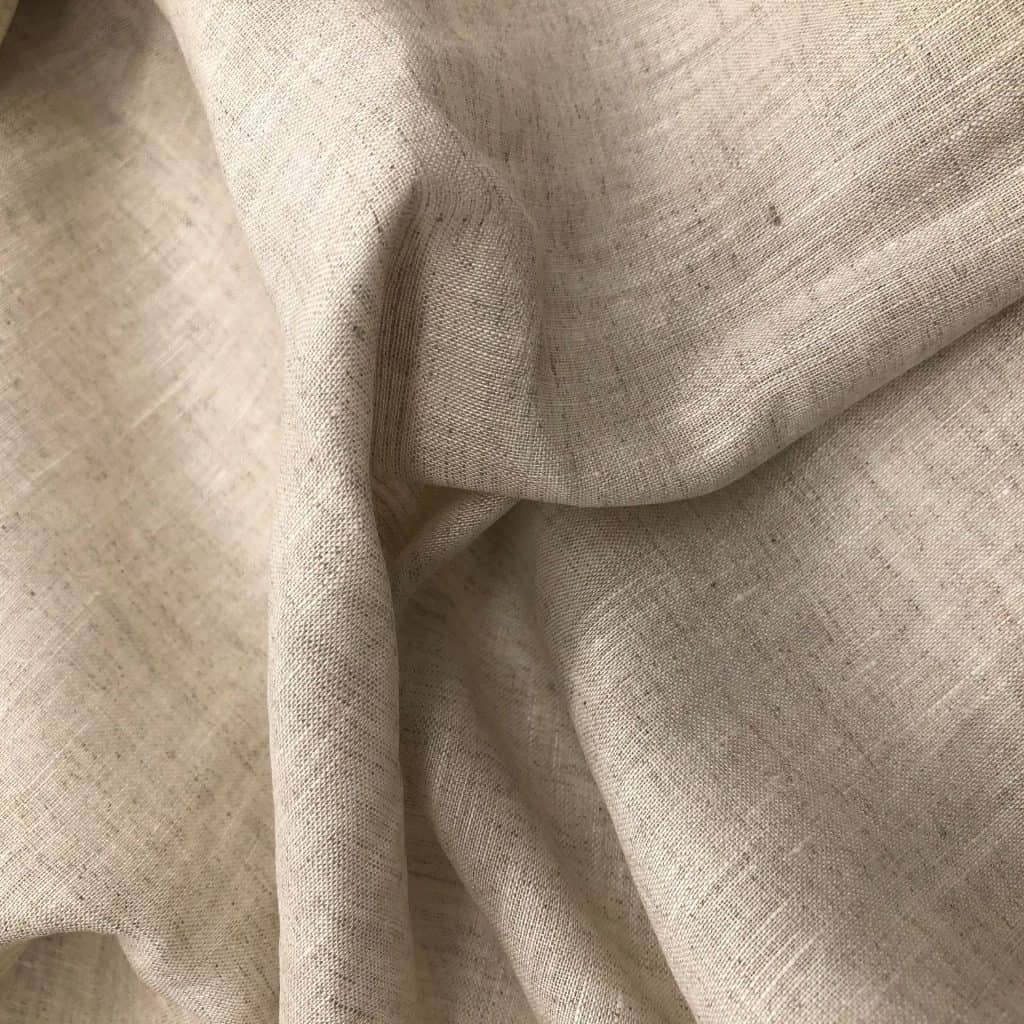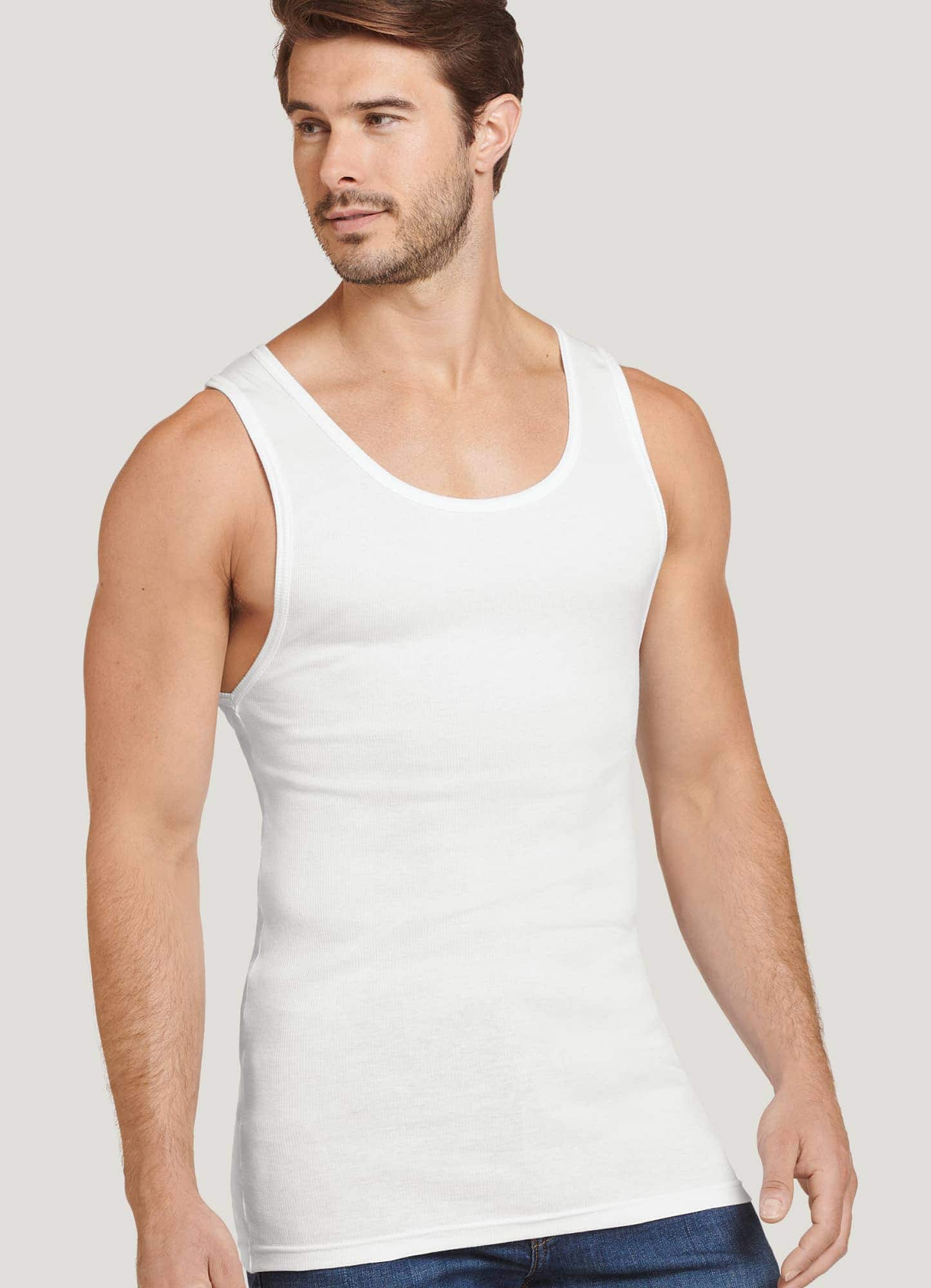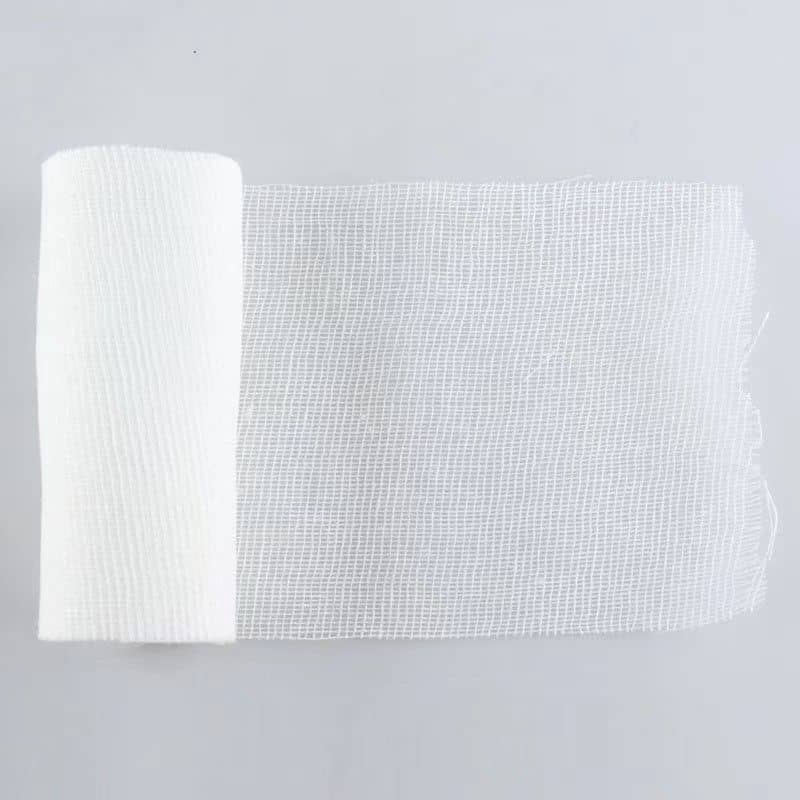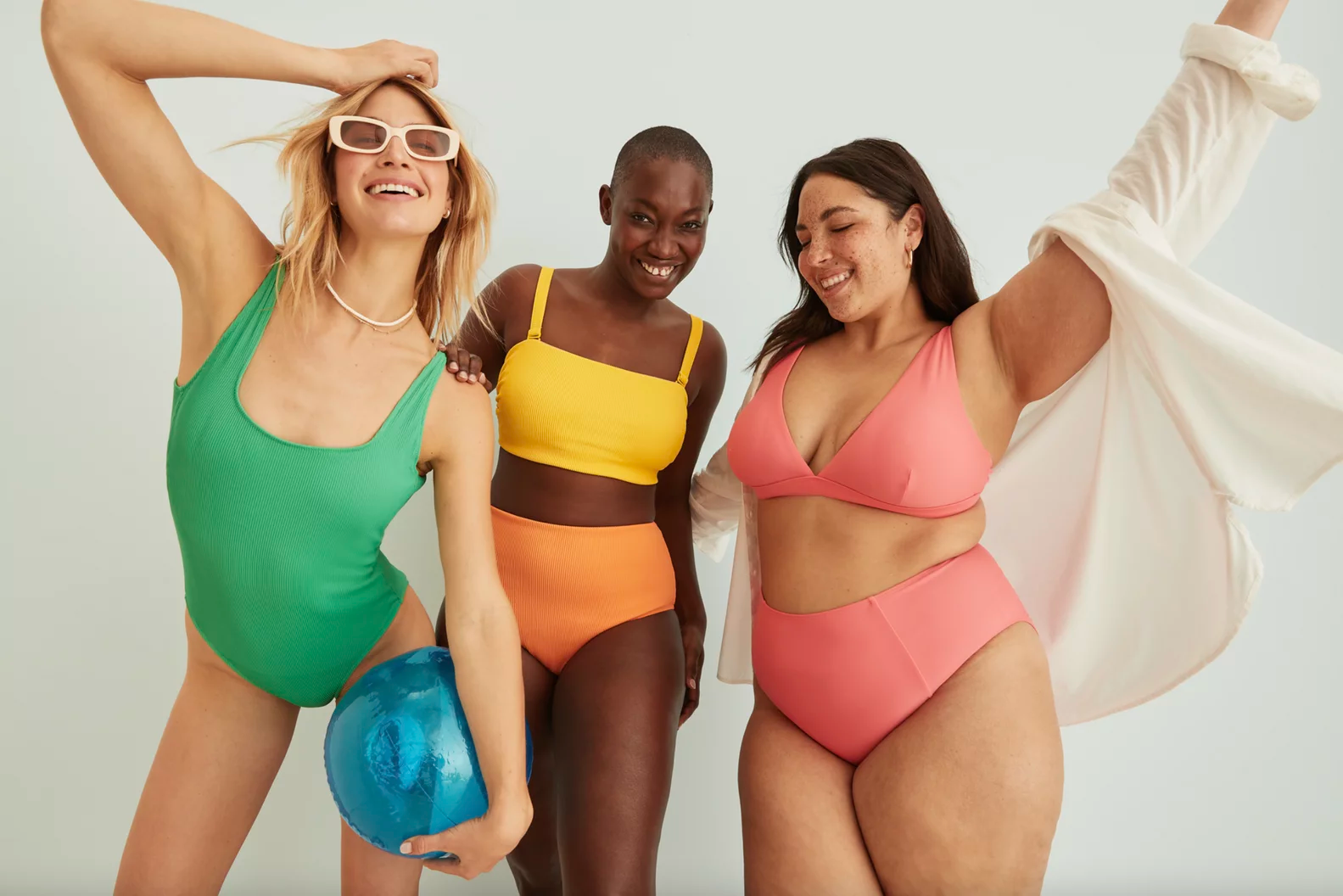
Source: POPSUGAR
Sunshine, beaches, confidence – that’s the magic swimwear brings! But for designers and clothing brands, that perfect summer staple needs to jump from sketch to reality. Swimwear manufacturing makes it happen! Skilled professionals cut, stitch, and craft the bikinis and one-piece suits that bring summer fun to life.
Bikinis or one-pieces? Both are fantastic! Bikinis, with their mix-and-match, separates, let you create endless looks. One-piece suits offer sleek coverage, perfect for diving into the waves in style. No matter your target audience and customer’s style, there’s a perfect swimsuit waiting to be designed.
Get ready to dive deep into the world of swimwear manufacturing! This guide unlocks the secrets of picking the perfect materials and crafting flattering patterns. Every detail makes a splash, so get ready to design swimwear that looks and feels amazing!
Understanding Swimwear Manufacturing
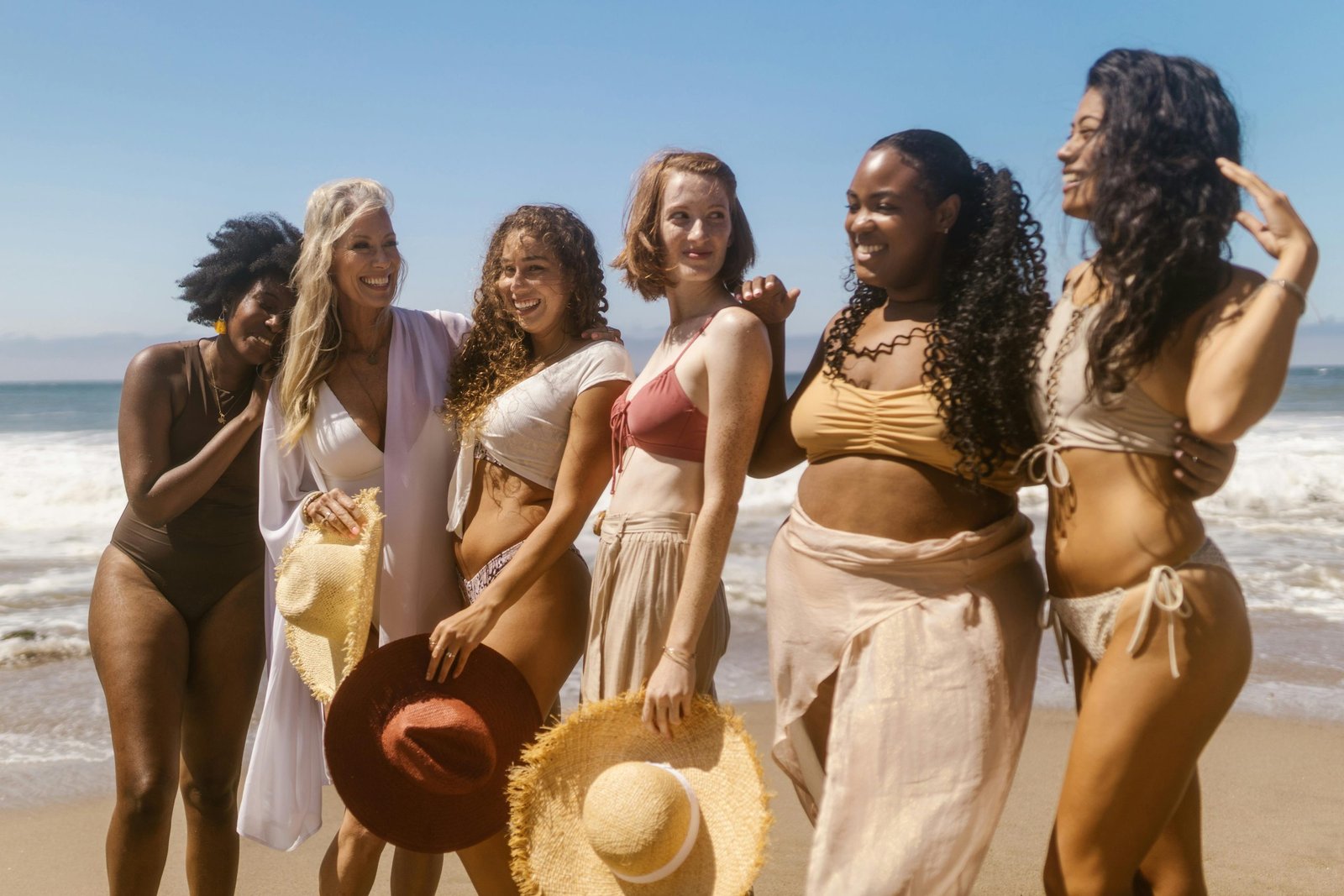
Source: Pexels
Spot a cute bikini or cool one-piece and wonder how it’s made? Swimwear manufacturing has totally changed! Way back, people swam in full outfits! Over time, styles got much cooler, with lighter and comfier materials. Now, swimwear is both stylish and functional because of brand new fabrics and designs. This lets designers create suits that look amazing and feel great to wear in the sun.
Choices are key in swimwear manufacturing today. Fabrics come in all sorts of options: sun protection, perfect fit, and bold colors to make your designs pop. Plus, with tons of styles to pick from, you can design swimwear for any beach lover!
Designing the perfect bikini
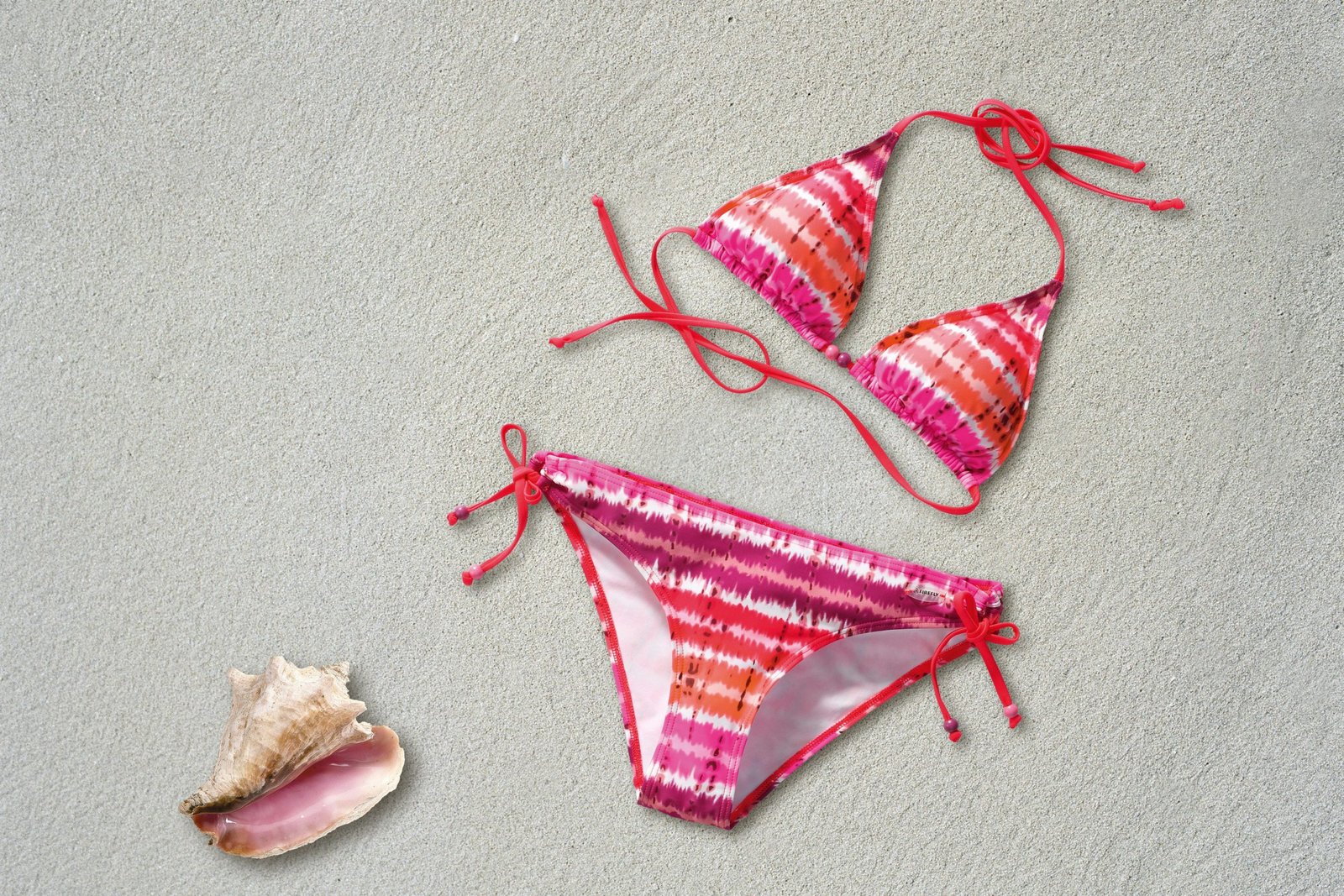
Source: Pexels
Designing the perfect swimsuit is like creating a mini-masterpiece! It’s all about capturing a feeling of fun soaking up the summer sun. Imagine the joy your design will bring to someone splashing in the waves! Next, we’ll dive into translating that feeling into a stunning design, with the right fabric choices to make your vision a reality.
Steps on designing a bikini / one-piece
Ready to turn your vision into a summer must-have? Designing a swimsuit follows a fun and creative process! Here’s a breakdown to get you started:
1. Setting your goals
Why create a swimsuit line? Maybe you spotted a gap in the market, or have a trend in mind. Figuring out your “why” helps you design something others will love, not just yourself. Think about who you’re designing for: is it everyone, athletes, or a specific style? This helps build your collection plan, including the types of swimsuits you’ll offer, the overall vibe (sporty, luxurious, vintage?), and who will rock your designs best.
2. Brainstorm and find inspiration
Time to get inspired! Research what’s hot in swimwear right now – styles, silhouettes, the whole package. Look to established brands, fashion magazines, online sources, and even runway shows. Familiarize yourself with different categories like bikinis and one-pieces. Create mood boards to capture the feeling you want your designs to evoke.
3. Design Time
Here comes the fun part: creating your designs! You have a few options:
- Ready-to-Wear
Many manufacturers offer pre-designed swimsuits you can customize with colors, prints, or combinations. This is perfect for startups or those on a budget who want to enter the market quickly.
- Templates
You can choose templates that match your desired styles, either from your chosen manufacturer or online platforms. These offer a variety of templates for different swimwear types.
- Go Your Own Way
Feeling creative? Design from scratch! Send screenshots, notes, or tech packs to your manufacturer and let them bring your vision to life.
- Mix & Match Magic
Maybe you’re feeling adventurous? Combine custom designs with some ready-made ones for a unique collection.
4. Making it real
Design locked in? Time to find a swimwear manufacturer! Choose a reliable one who gets your vision and uses top-notch fabrics. Open communication is key throughout this process. They’ll transform your design into a real swimsuit, ready to hit the market!
Designing a swimsuit masterpiece takes planning! Understand your goals, find inspiration, and choose your design path. Whether ready-made or custom, your vision will shine through.
Types of Bikinis
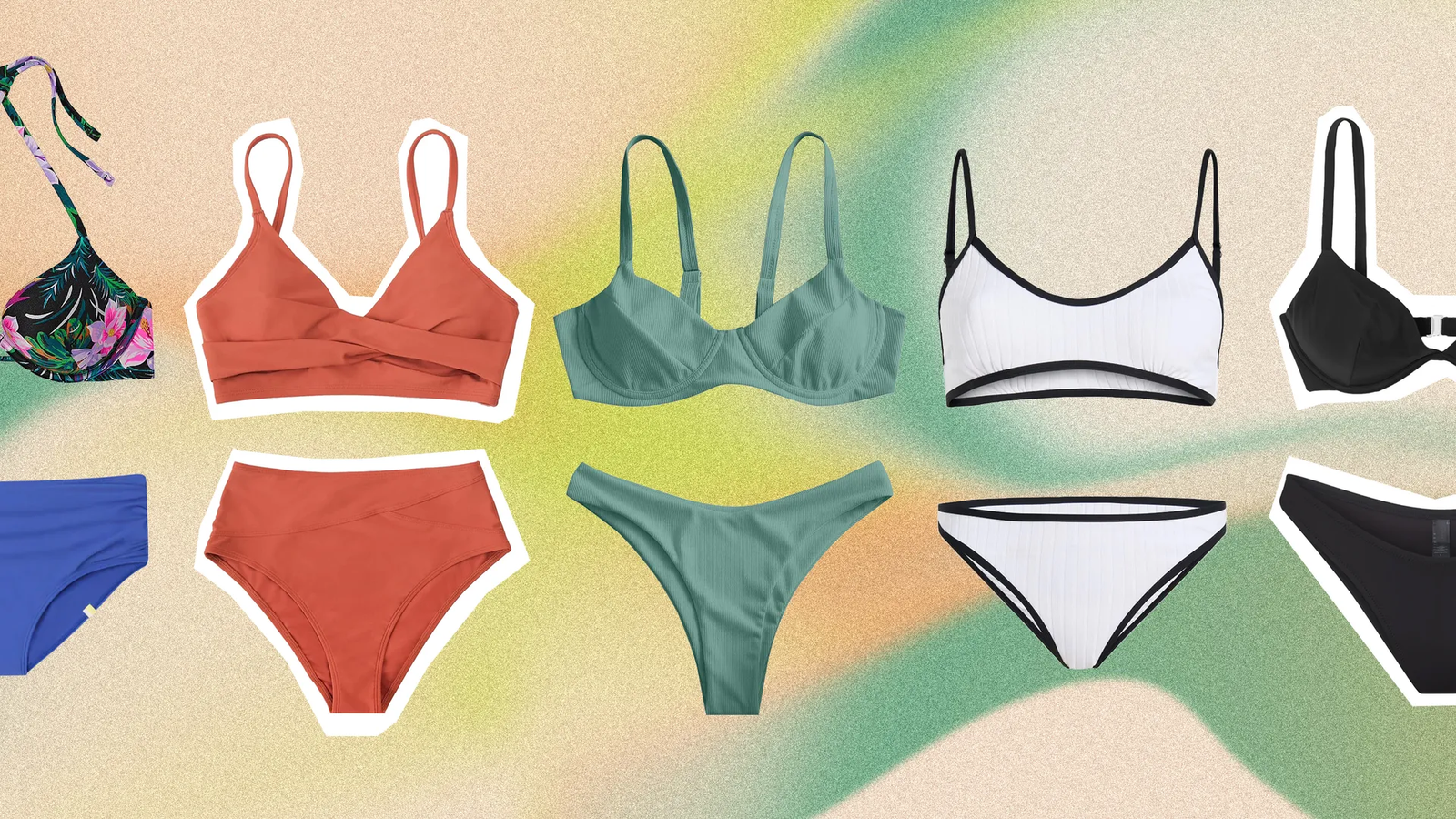
Source: Glamour
Two-piece lovers, rejoice! The classic bikini is here to stay. Sunbathing or catching waves, bikinis let you relax and feel confident.
Now that your design vision is clear, it’s time to pick the right type of swimwear! Here’s a breakdown of some popular styles to inspire you:
1. Bandeau
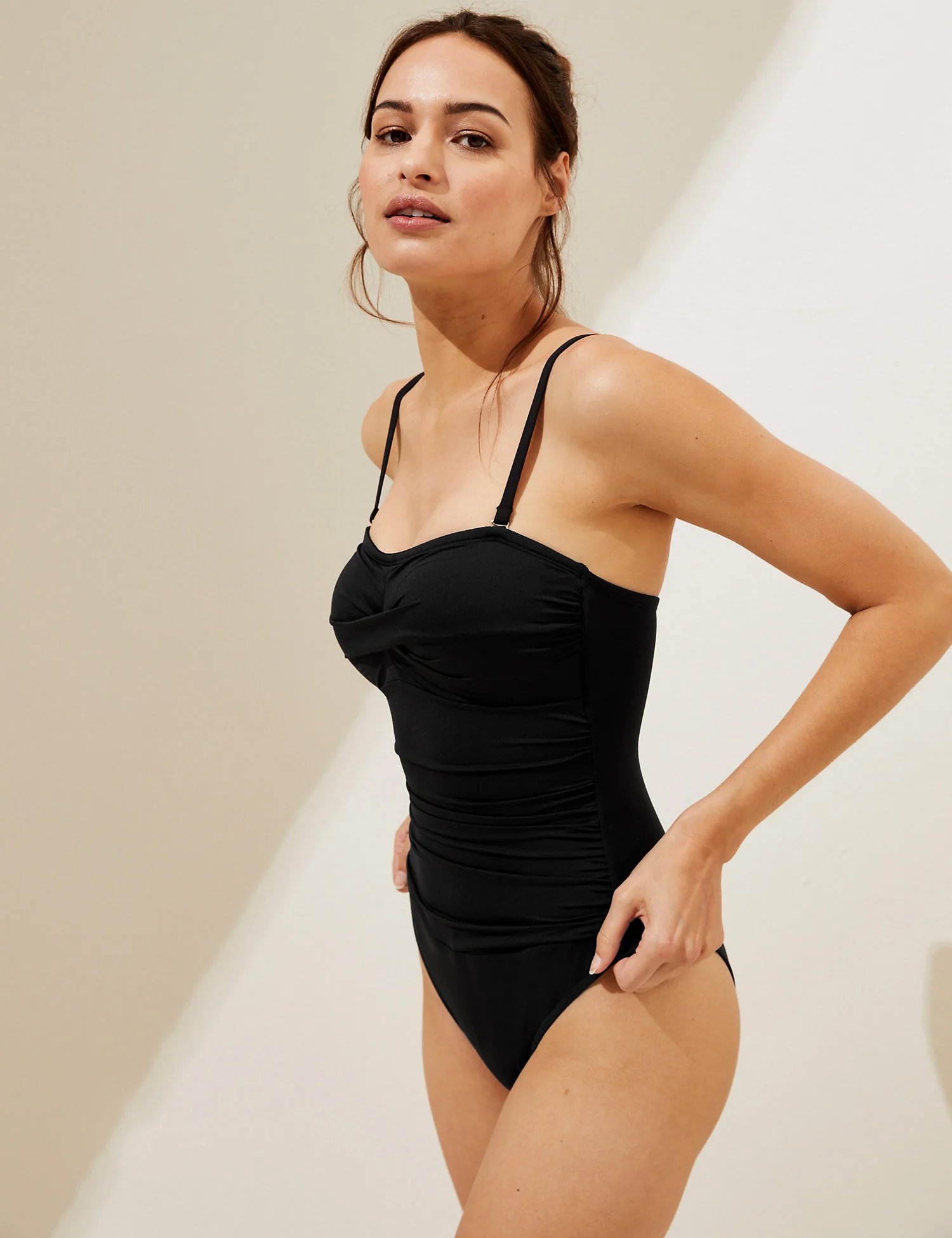
Source: Marks and Spencer
Strapless stunner! Bandeau bikinis offer a sleek, minimalist look and guarantee those perfect tan lines. So ideal for sunbathing and poolside relaxation.
2. Halter
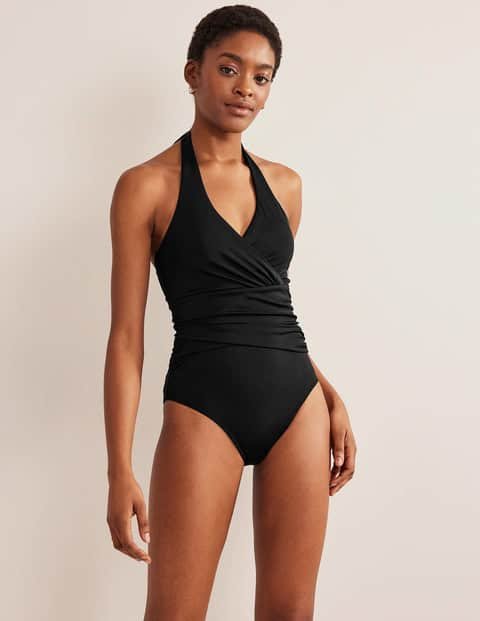
Source: Boden
Offering more coverage up top, halter bikinis are great for those who want some support. They pair well with any bikini bottom style.
3. Keyhole

Source: Ebay
Combining style and function, keyhole bikinis have a cutout below the bust for water flow. Perfect for swimming and showing off a touch of personality.
4. Longline
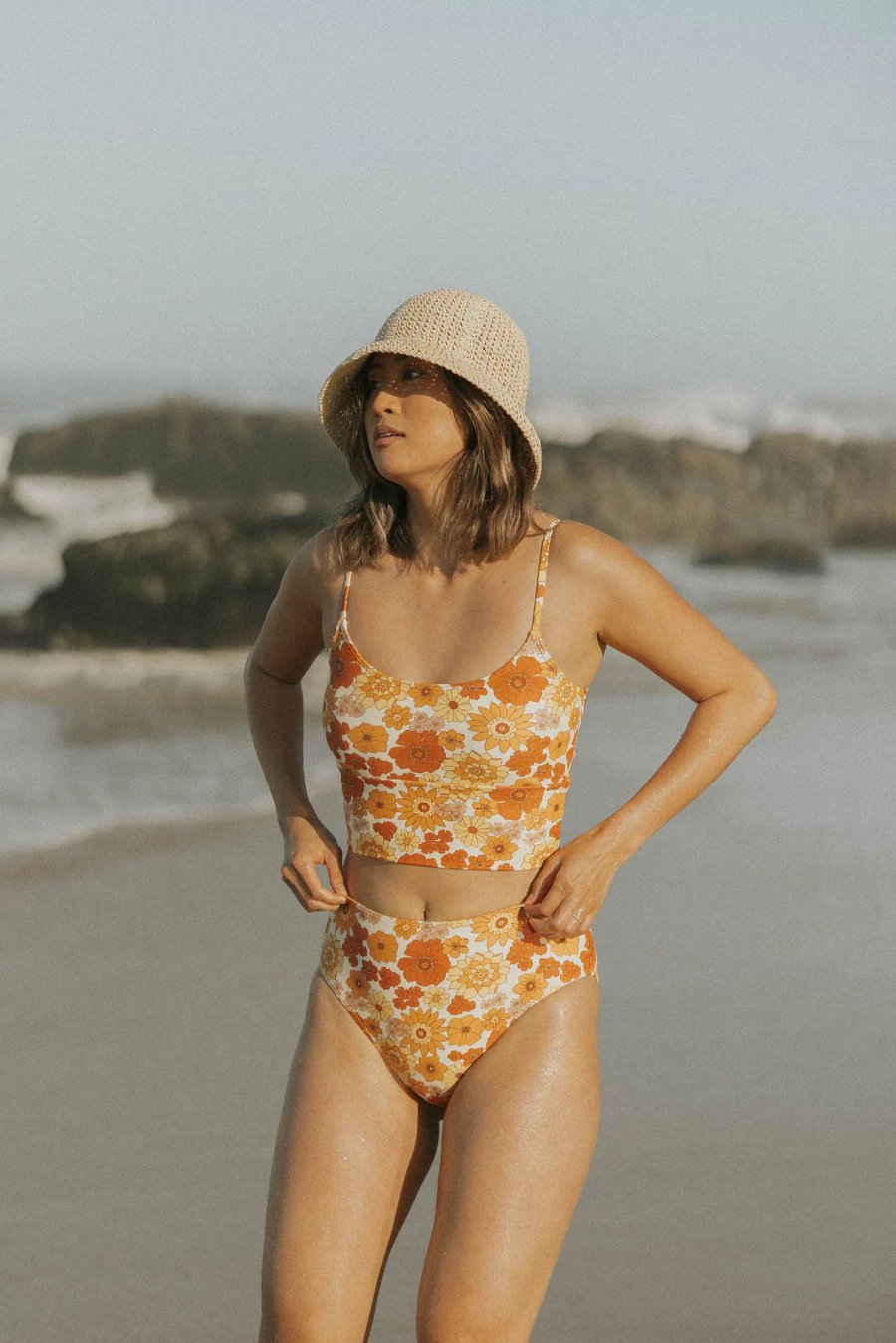
Source: Geode Swimwear
Want extra coverage? Longline bikinis offer a stylish silhouette with tops that extend below the bust. Great for a variety of body types.
5. Microkini
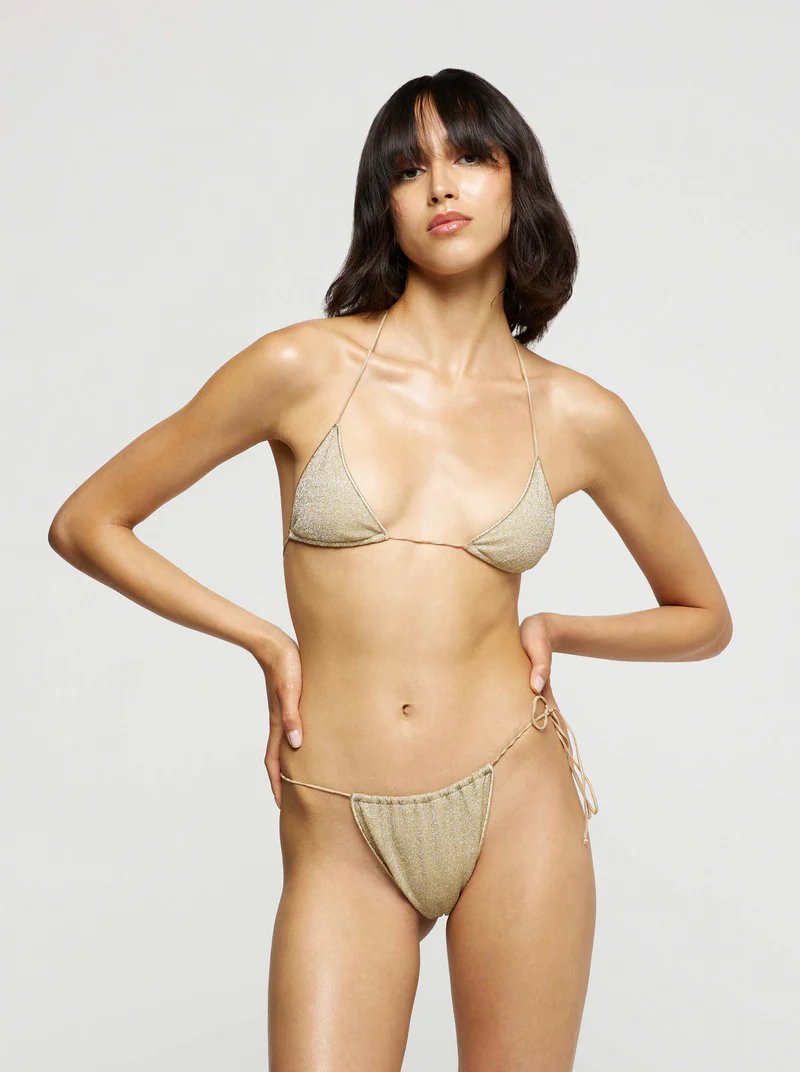
Source: Oseree
Designed for minimal coverage, micro bikinis are all about showing off some skin. Ideal for confident beach babes who love a bold look.
6. Skirted
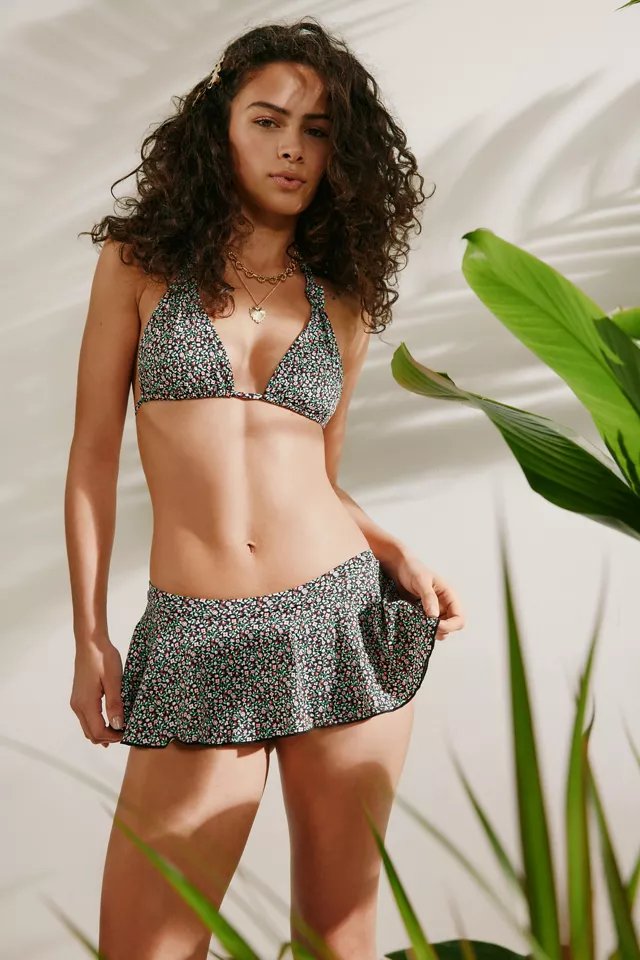
Source: Urban Outfitters
Have the best of both worlds with skirted bikinis! They offer more coverage while maintaining a stylish bikini feel. Ideal for those who want a touch of modesty.
7. Tankini
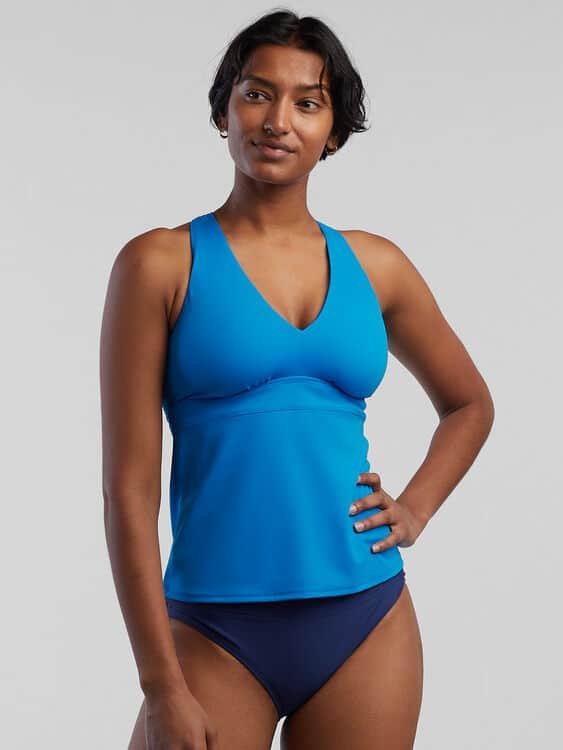
Source: Title Nine
Two-piece with more coverage? Look no further than tankinis! They combine a comfy tank top with bikini bottoms, flattering your figure and offering endless possibilities. Mix and match tops and bottoms to create unique styles for every poolside adventure!
8. Wrap
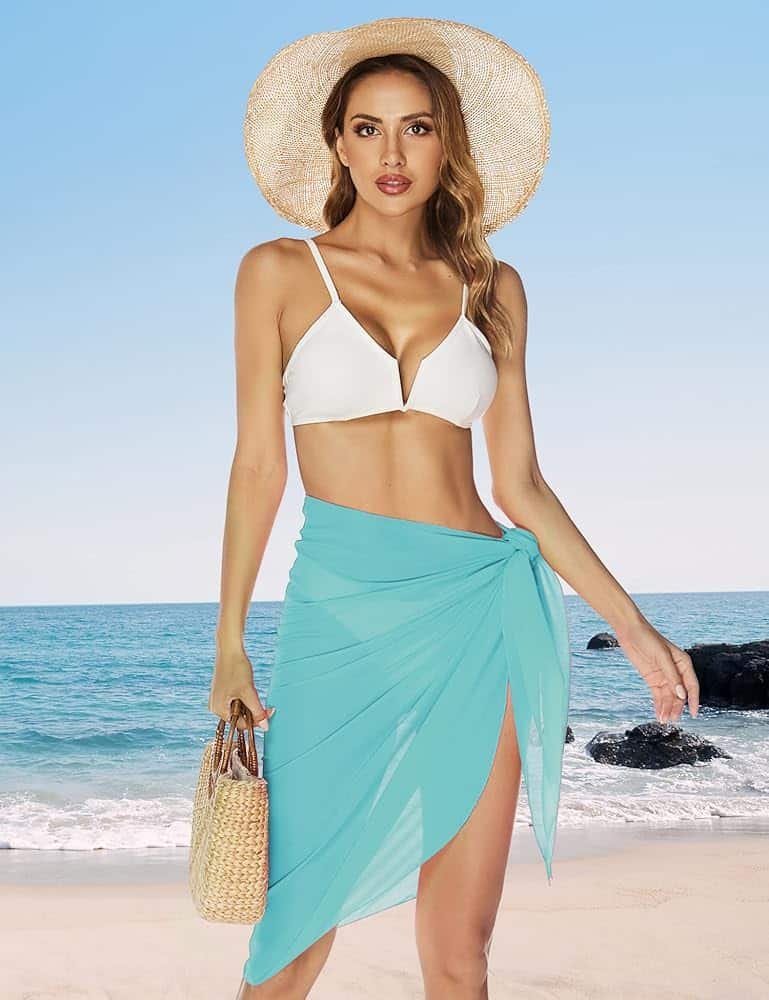
Source: Amazon
Wrap bikinis are all about adjustability. They feature a top with extra fabric that you can wrap around your torso and tie in different ways. This allows you to customize the coverage and fit for a unique look.
Types of one piece swimwear

Source: Under-tec
One-piece swimsuits are incredibly versatile. Here are some popular options to flatter every body type:
1. Asymmetrical
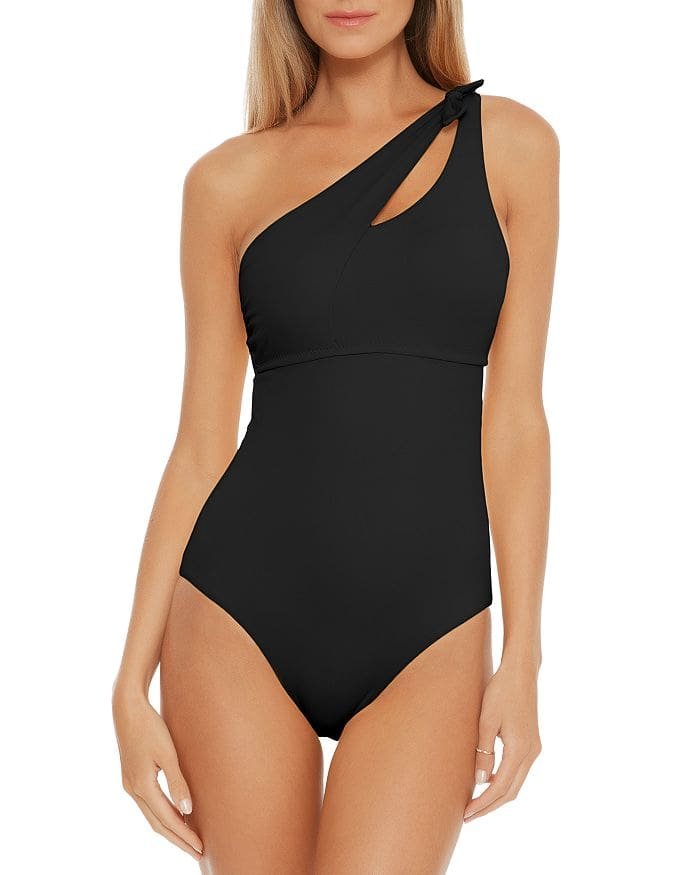
Source: Bloomingdale’s
Stand out with an asymmetrical one-piece. This design features a single-shoulder strap and often includes unique cutouts, knots, or draping for a high-fashion touch.
2. Cross-back
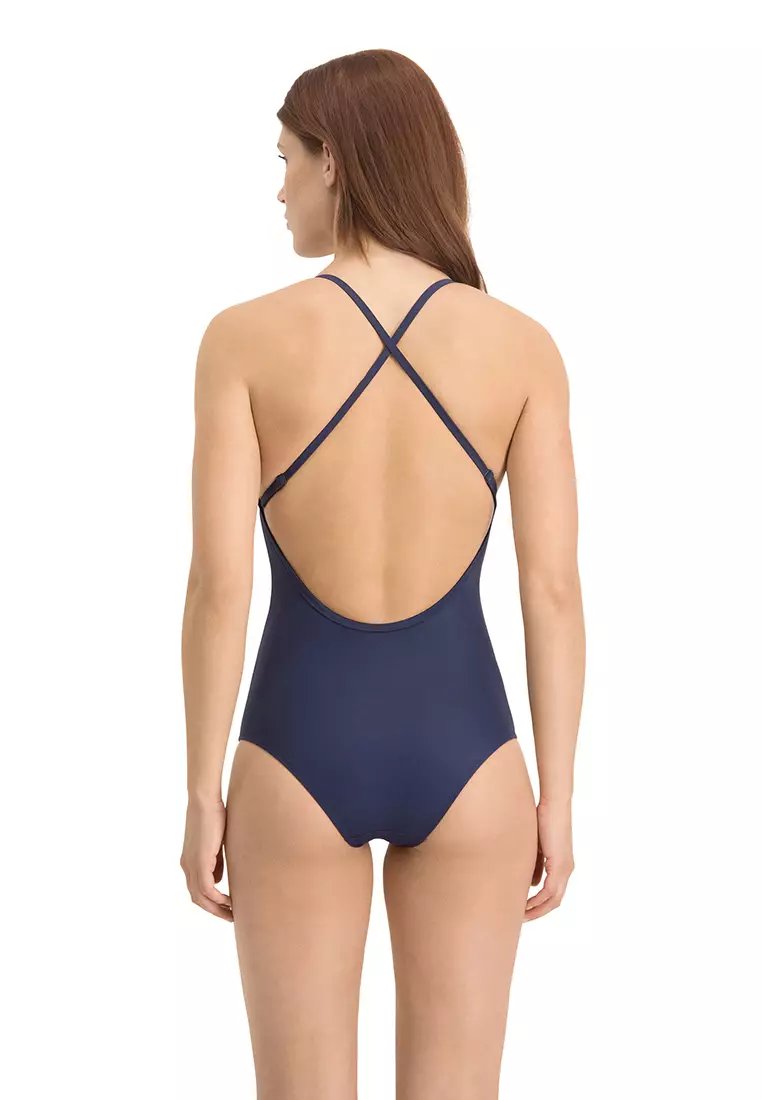
Source: Zalora Philippines
Straps that cross on the back define this stylish and supportive design. Cross-back one-pieces ditch the racerback for a unique “X” design, perfect for swimming or lounging in style.
3. Cut-out
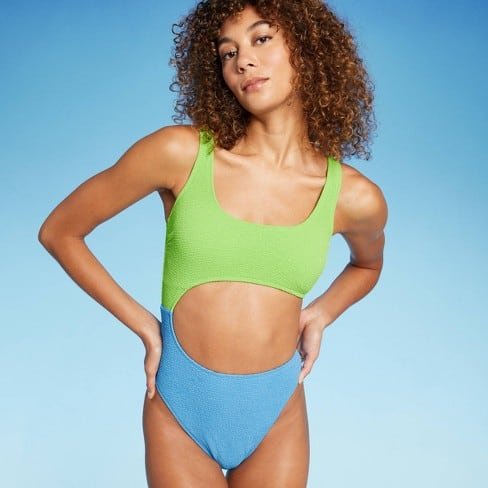
Source: Target
Feeling bold? Show off some skin with strategically placed cutouts! Choose the amount of reveal that feels comfortable for you, whether it’s on the sides, front, back, or waist.
4. Fauxkini
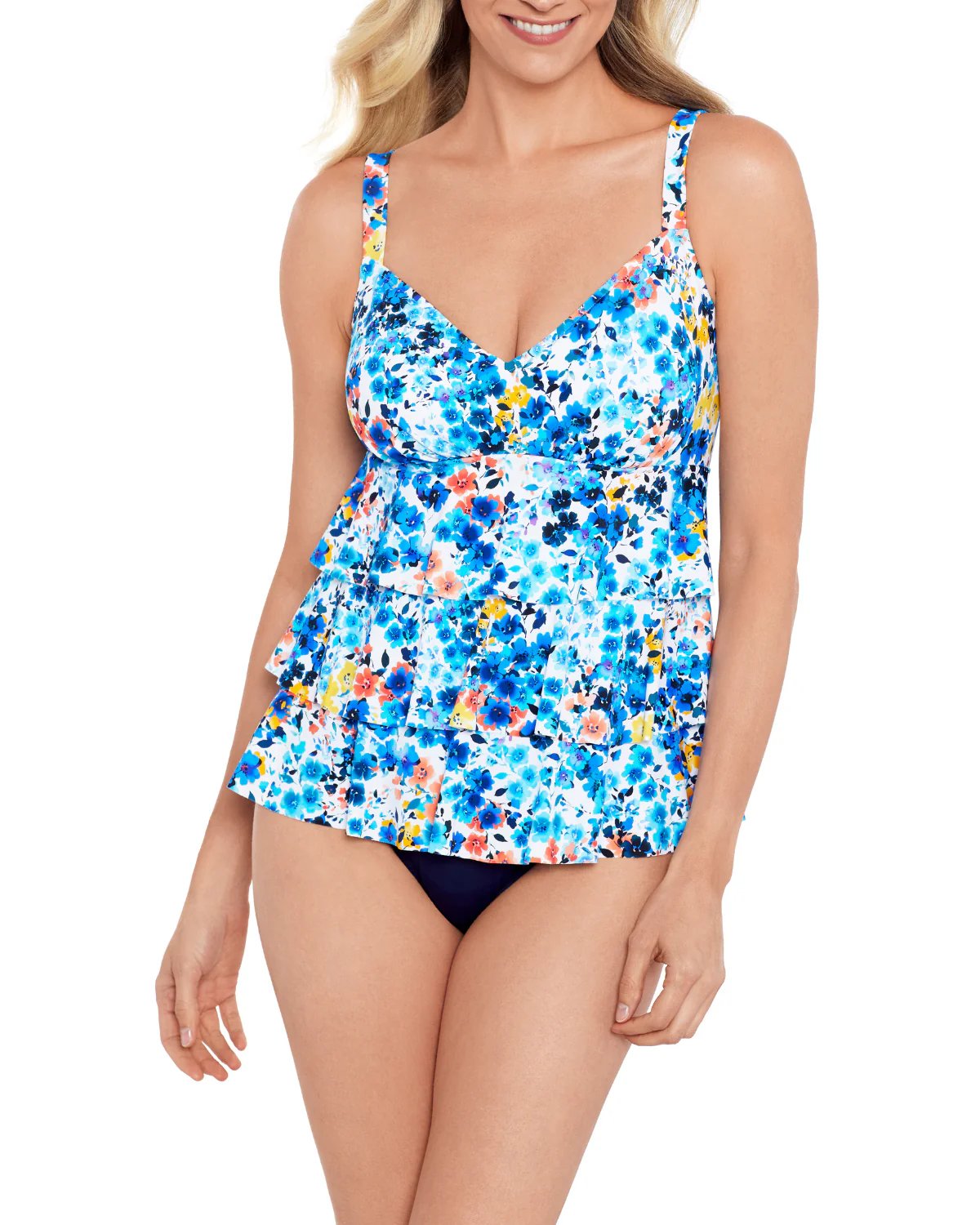
Source: Blum’s
Craving the look of a tankini but the ease of a one-piece? The fauxkini is for you! Fauxkini combines a tankini-style top with a one-piece bottom, offering both modesty and style.
5. Monokini
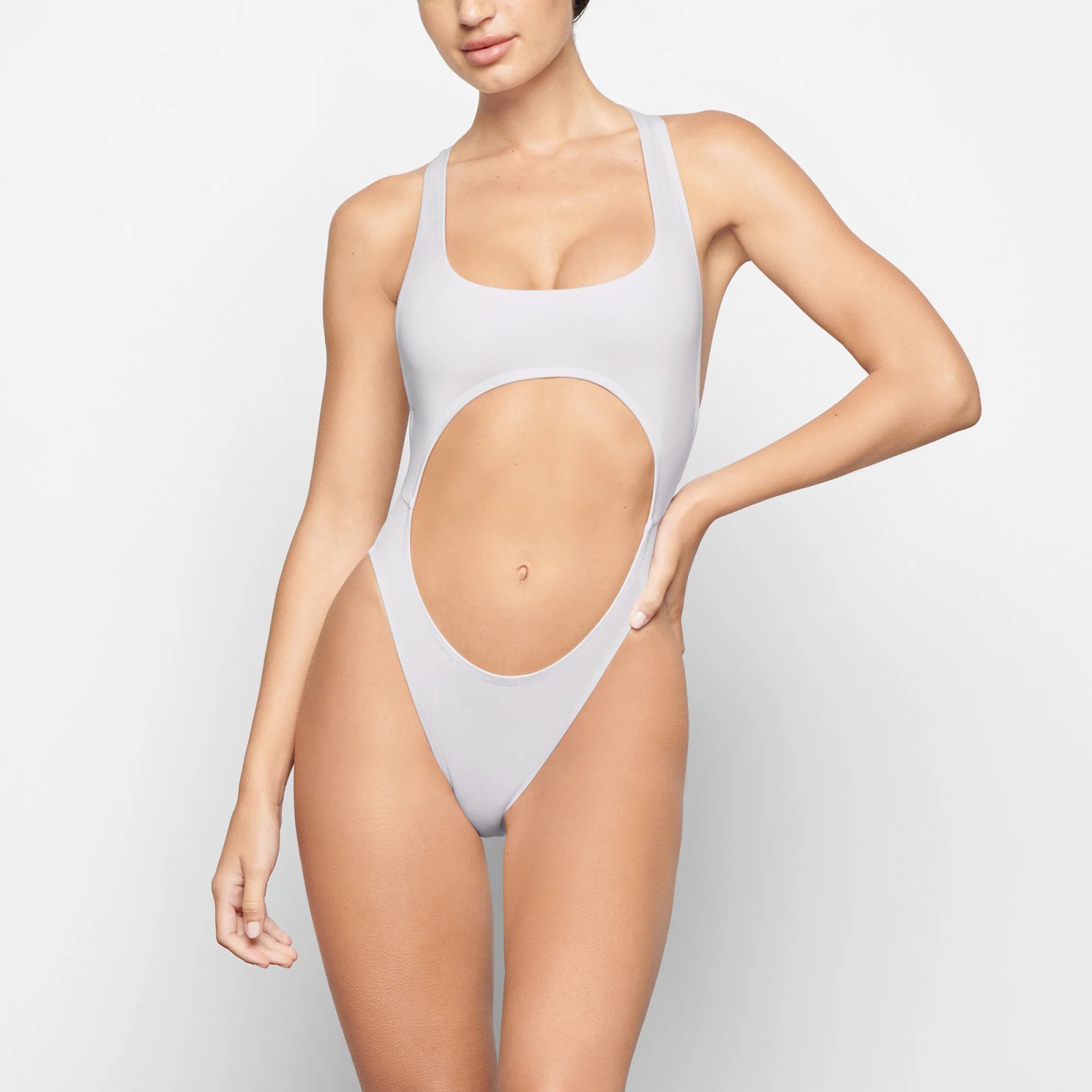
Source: Skims
Make a statement with a monokini! This head-turning option, the monokini, combines the daring cuts of a bikini with the flattering coverage of a one-piece.
6. Rash guard
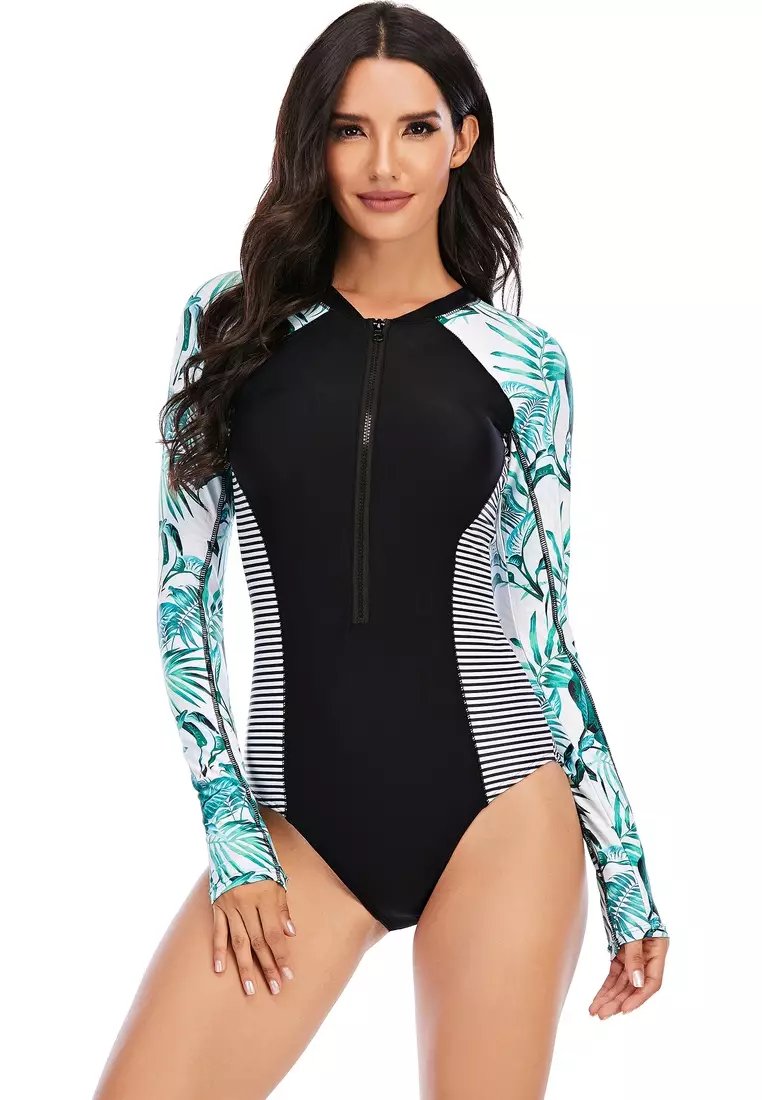
Source: Zalora
Protect your skin while looking great with a rash guard one-piece. This suit features snug top with long or short sleeves, ideal for activities like surfing.
7. Sporty/Athletic
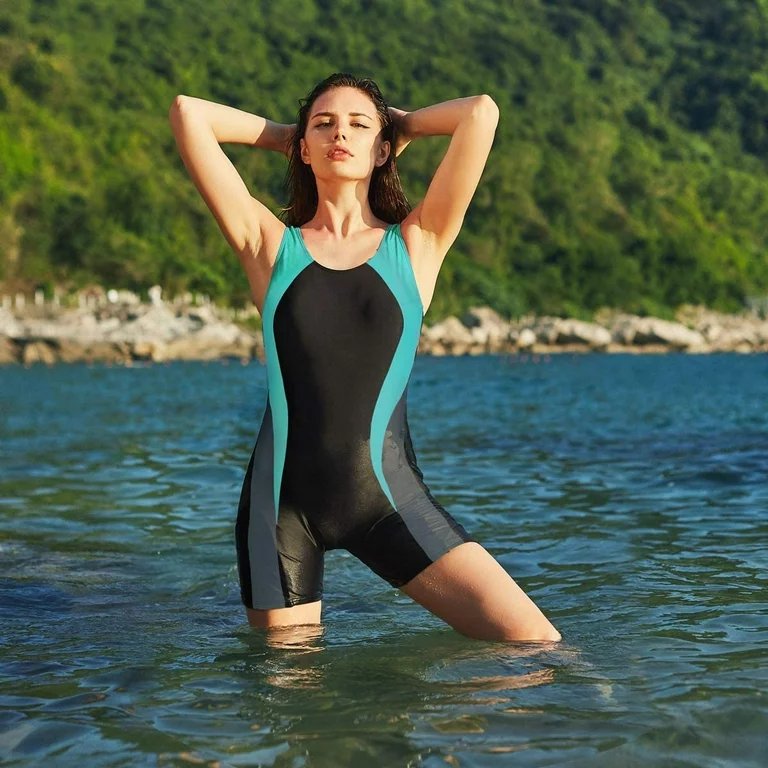
Source: Walmart
Designed for performance, sporty one-pieces are perfect for lap swimming or water aerobics. They offer maximum support and freedom of movement.
8. Swim Dress
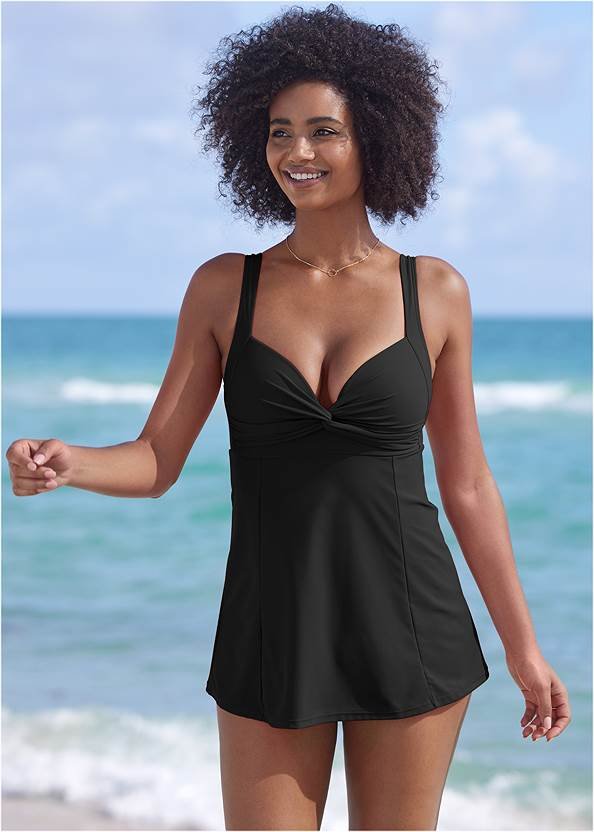
Source: Venus
Love the comfort of a swimsuit but want a touch of elegance? Swim dresses are calling your name! Such a beauty features a skirt attached to the bottom for more coverage.
Unleash your creativity! Explore a world of fabrics and embellishments to design swimwear that speaks to you. Don’t underestimate the power of details – even small touches can make a huge statement. So have fun and experiment!
Anatomy of Garment

Anatomy of Bikinis
Knowing your garment’s parts is key! It helps you grasp potential costs, the manufacturing process, and more.
What are the parts of a bikini/one piece swimwear?
Swimwear seems simple, but every design change can affect function and style. Let’s explore the parts:
-
Bodice

This is the main part of the top, including the lining. Bodice comes in all shapes and sizes, from full-coverage to daringly backless. Spice them up with lace-up details, ruffles, or any other fun embellishments that reflect your personality.
-
Straps
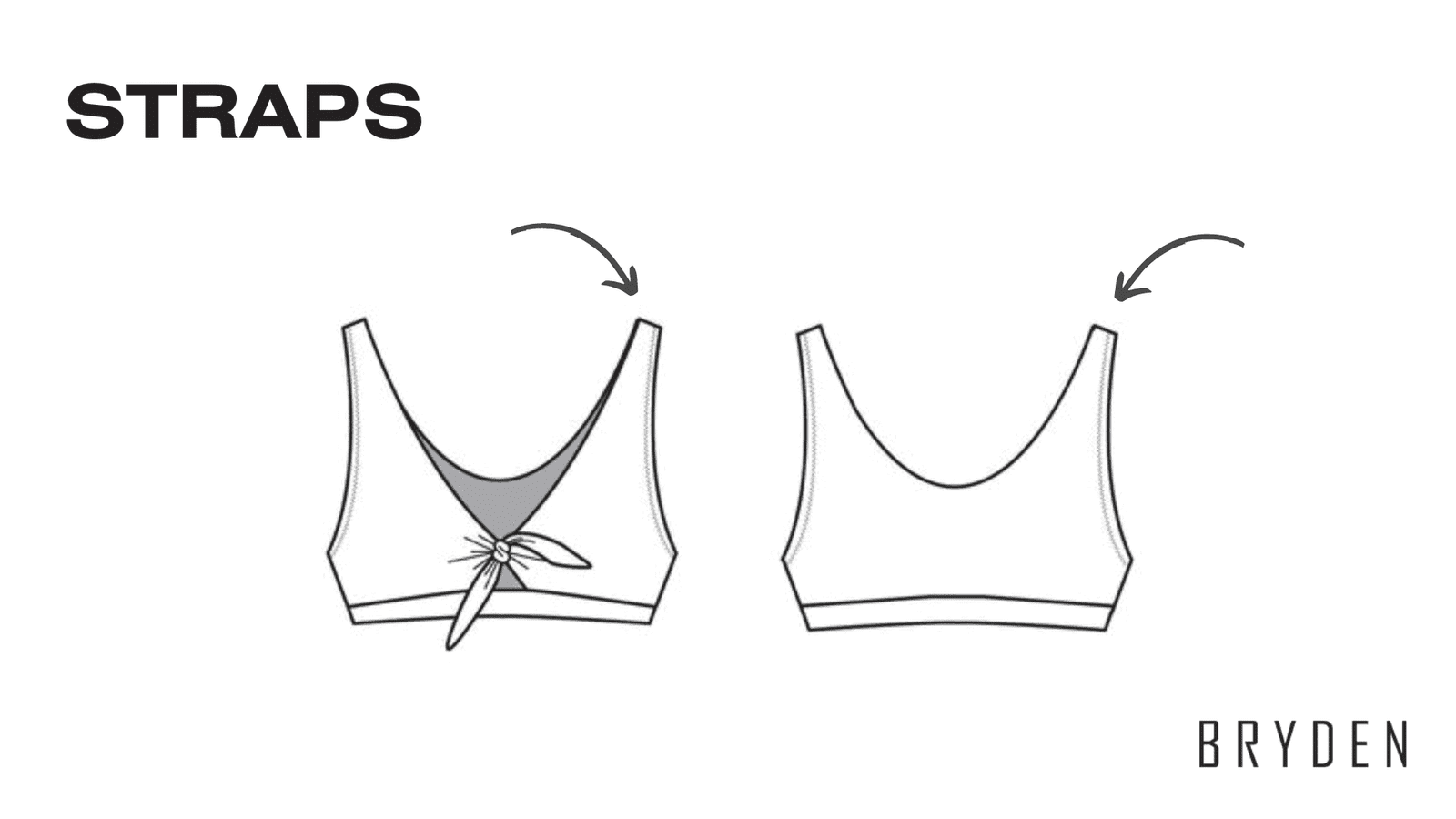
Straps? Definitely, not a one-size-fits-all deal. Bikinis can have removable straps for versatility, adjustable straps for the perfect fit, or fixed straps for a classic look. Styles range from standard straps to trendy one-shoulder designs.
-
Neckline

This refers to the top opening of the bodice. Here are some common necklines: asymmetrical, sweetheart, v-neck, plunge, and scoop.
-
Bra Cups
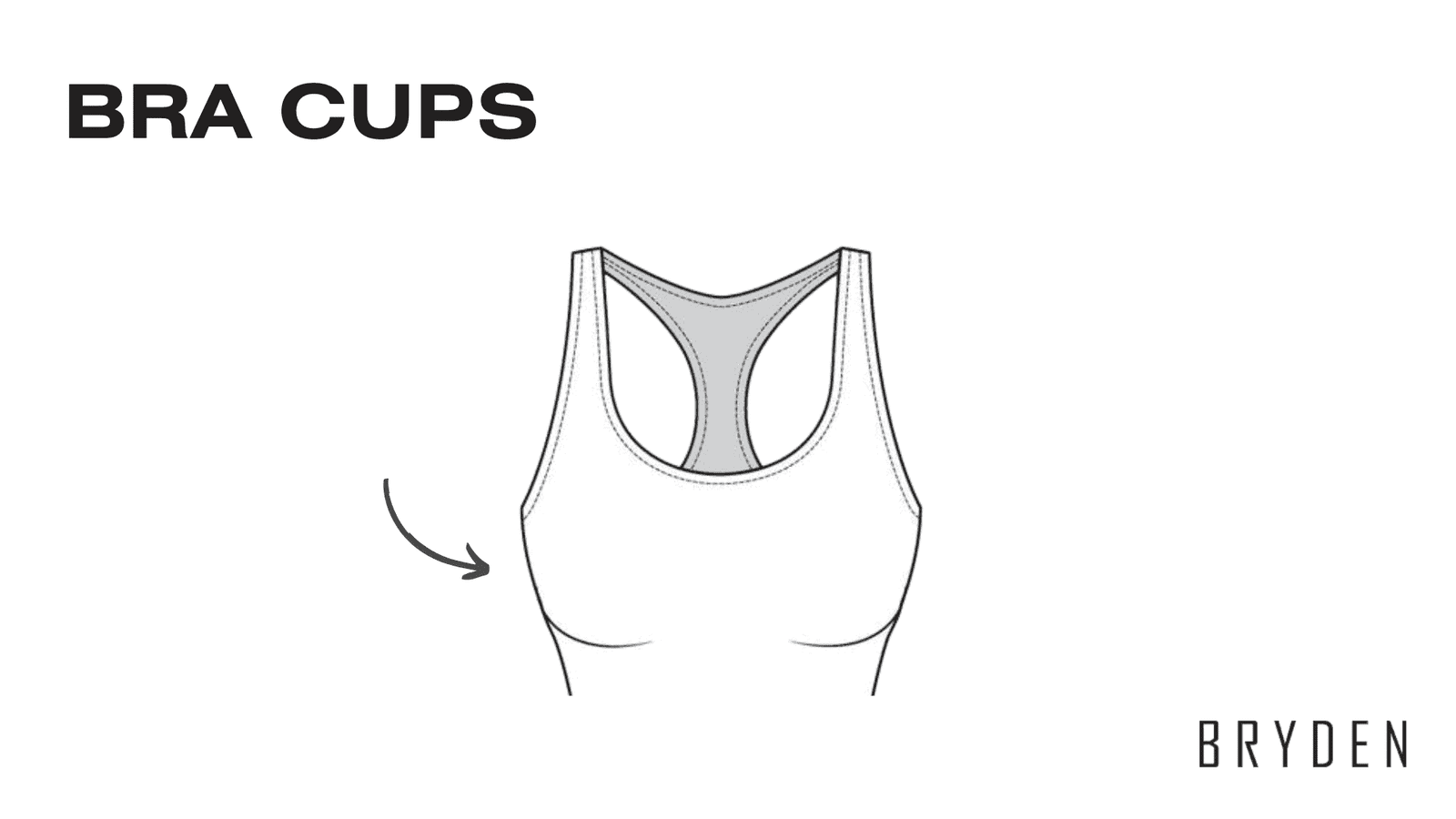
Optional, usually removable, for added support.
-
Armhole
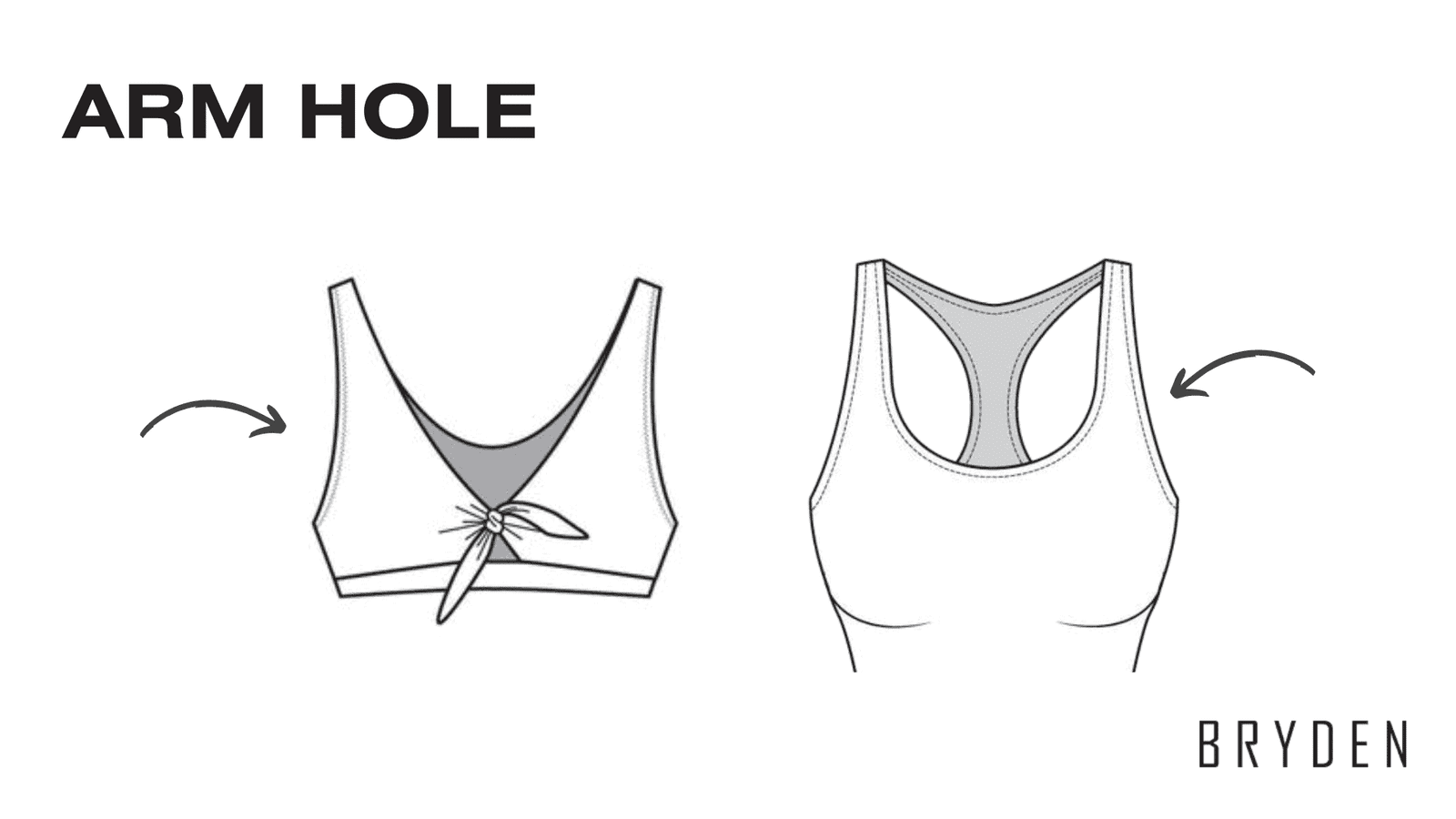
This is the opening for the arms, and the size/shape can affect comfort and movement.
-
Leg opening
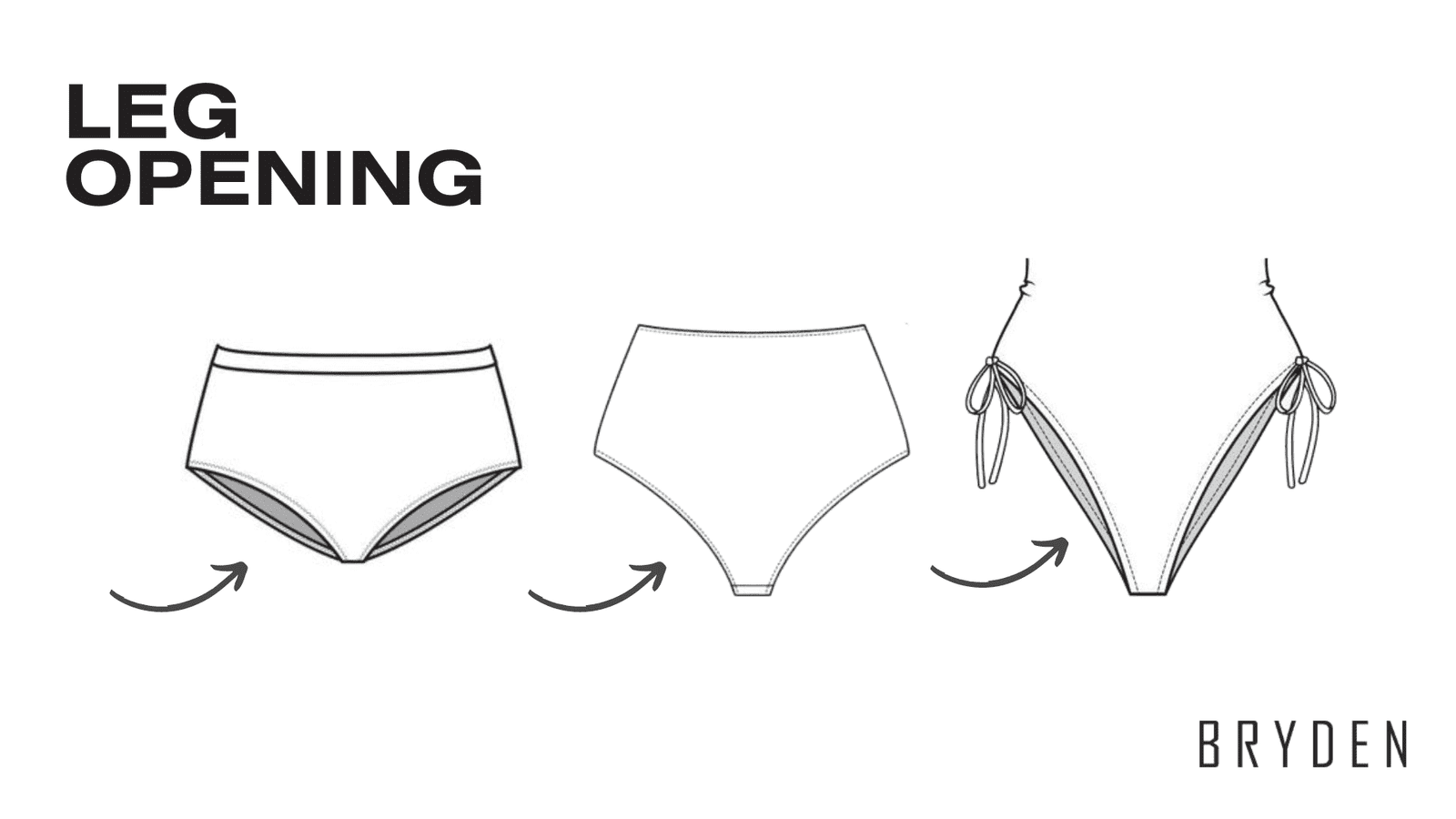
This is the bottom of the bikini bottom. The cut (high-waisted, cheeky, etc.) affects coverage and style.
Slight design changes can impact manufacturing. Knowing your design details, like a one-shoulder strap versus a standard two-strap style, will help you find the perfect manufacturer to bring your vision to life.
Choosing Quality Fabrics
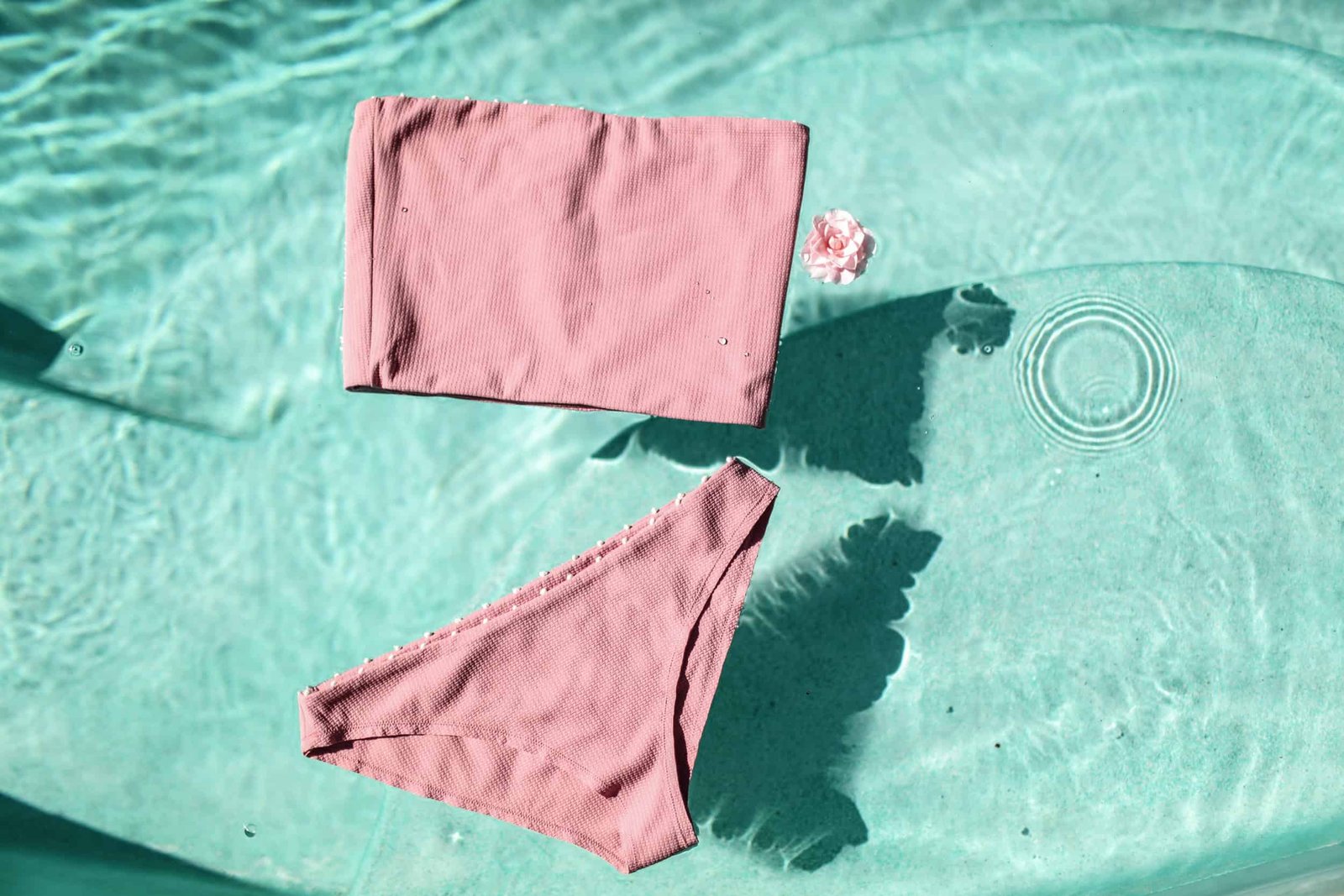
Source: Chelsea Prestin Photo
Swimwear fabric does double duty – it looks great and lasts! It tackles tough conditions like chlorine, sun, and water. Comfort is key too, nobody wants a wardrobe malfunction! Here’s a guide to picking the perfect fabric for swimwear design:
The most popular fabric types for swimwear include:
1. Nylon Blends
Strong and abrasion-resistant, perfect for active wear. They handle chlorine, saltwater, and sun well. Soft against the skin, they last longer with a comfy, snug fit when blended with spandex.
2. Polyester Blends
Durable and keeps its shape and color, making your swimsuit look great over time. Great for frequent pool use, they resist chlorine and sunlight. Many offer high sun protection (UPF) for beachwear.
3. Spandex/Elastane Blends
Calling all active beach babes! Need fabrics that move with you? Look no further! These comfy blends, often made with polyurethane or a mix of polyester/nylon, offer incredible stretch and snap right back into shape, perfect for any poolside adventure.
4. Neoprene
Feeling the chill? Neoprene’s your friend. It’s the ultimate insulator for cold water activities like surfing. Not only does it keep you warm, but it also floats, dries fast, and resists mold – a win-win for water warriors!
5. Lycra
Lycra: the champion of stretch! Made with a polyester and polyurethane blend, it can stretch a whopping 600% and still bounce back, making it ideal for form-fitting suits that hug your curves.
6. Ribbed Fabric
These fabrics add texture and interest, with good stretch and recovery. They can be combined with other materials for a unique look and feel.
Looking for a unique twist? Many fabrics can be blended for the best of both worlds! For example, nylon spandex offers durability and softness but might fade faster. Polyester spandex is colorfast and tough, but can feel a little less soft.
Sustainable and Eco-Friendly Fabric Options
Swimwear manufacturing is becoming more eco-friendly. Designers and brands are using sustainable materials like:
-
Hemp
Non-toxic and microplastic-free, hemp offers excellent UV protection and resists mold and mildew naturally.
-
Bamboo
And for the eco-conscious fashionistas with sensitive skin, there’s bamboo! This soft, smooth, and breathable fabric keeps you cool and dry, plus it offers natural UV protection and is hypoallergenic – perfect for those with delicate skin.
-
Recycled Materials
The future is green! Eco-friendly materials like Repreve and Econyl are taking over swimwear. These fabrics deliver the same high-quality performance you expect, but with a lighter environmental impact. It’s a win-win for you and the planet!
Choosing the right fabric depends on your design. Consider the activity level, coverage, and desired look. Talk to your swimwear manufacturer – they’ll help you find the perfect match for your swimwear vision!
Pattern making and cutting
Swimwear goes from dream to reality through pattern making and cutting! This is where your ideas take shape.
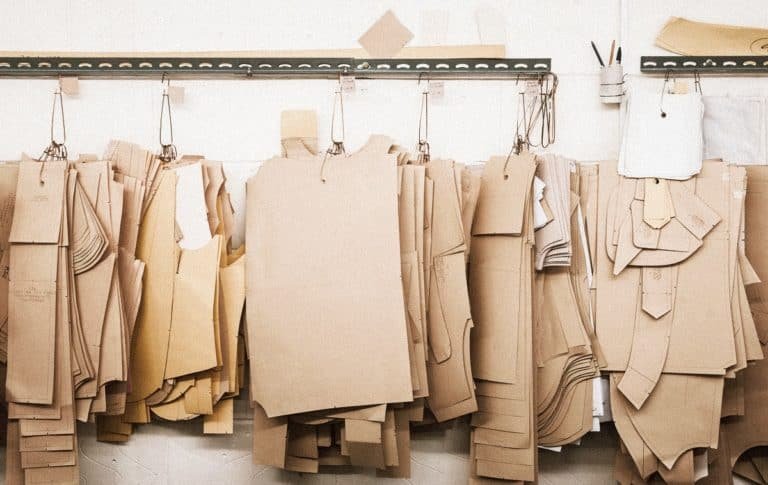 Source: From Squalor to Baller
Source: From Squalor to Baller
From Idea to Pattern
Your design is ready, fabric chosen – now for the pattern! Swimsuit makers (or pattern makers) can help turn your ideas into a blueprint. They can even create base patterns you can adapt to your style. Choose from experienced craftspeople who make paper patterns by hand, or those who use computers, or even both!
Paper Power
Paper patterns are made by hand, requiring skill and care. It’s a traditional method used by many experts. The beauty of paper patterns? They can be adjusted by hand for a perfect fit. This method is reliable and familiar to many designers.
Digital Designs
Computer programs are also used to create digital patterns. These are stored and retrieved quickly and precisely, allowing for easy changes. The finished patterns can be sent straight to whoever needs them, no waiting for deliveries! This makes the process faster and smoother.
Cutting with Care
Once the pattern is ready, it’s cutting time! This is a delicate process. Precise cutting ensures the swimsuit fits perfectly and performs well. Swimwear makers take great care when cutting to create high-quality garments.
Pattern making and cutting are the secret weapons for bringing your swimsuit designs to life. Whether using paper or computers, these steps guarantee a great-looking swimsuit that fits just right!
Pattern making (how to with samples)
Swimwear designs come alive through pattern making! Each style needs its own special pattern to ensure a perfect fit and stunning look. Here’s a peek at different styles and how their patterns are made:
1. One-Piece with Ruching & Halter
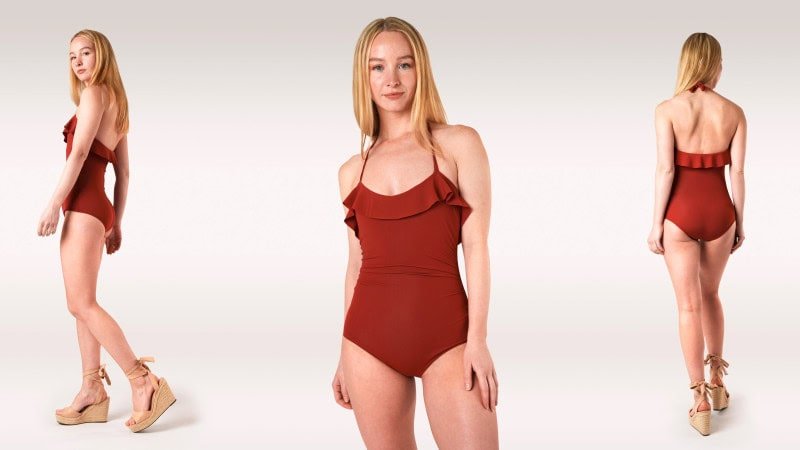 Source: moodfabrics
Source: moodfabrics
One-piece swimsuits come in many styles! This one has pretty ruching, halter straps, and a sweetheart neckline. The pattern is made in pieces – front and back are joined, ruching is added for a fun texture, and then the halter straps and neckline finish the look. This design is both elegant and flattering.
2. High-Waist Bikini Power
 Source: Swim Style Patterns
Source: Swim Style Patterns
High-waist bikinis are trendy and comfy! The top has a square front and a scooped back. It has a double lining in front for removable cups (optional) and an under-bust band for extra support. The high-waisted bottom is fully lined with a smooth leg finish and an elastic waistband for a secure fit. This design is both stylish and comfortable.
Every swimwear pattern is unique because different styles need different techniques. Understanding these differences helps create the perfect swimwear. Whether it’s a one-piece or a high-waisted bikini, the right pattern makes all the difference!
Pattern making and cutting for bikini and one-piece swimsuits
Swimsuit designs come alive after the pattern making stage. Here’s a peek behind the curtain at how patterns for bikinis and one-pieces are transformed into reality:
Pattern Making Expertise
Creating flawless swimsuit patterns requires skilled professionals. Experience and precision are key for a perfect fit and stunning design. Several factors are considered, including the style, fabric choice, and desired level of support.
The chosen style dictates the number of pattern pieces. One-piece with ruching? Halter straps? Sweetheart neckline? These seemingly simple details often involve multiple meticulously drafted pieces for the front, back, straps, and neckline. Seamless construction ensures a perfect fit that flatters your form.
Cutting with Care
Once the pattern is complete, the magic of cutting transforms it into reality. Swimsuit fabrics can be slippery, but experienced professionals handle them with ease. Single layers are preferred for cutting, ensuring accuracy and efficiency. Rotary cutters and weights become handy tools for precise cuts. The fabric’s printed side faces up during cutting, so designers can ensure a perfect pattern placement.
Cutting and sewing in swimwear manufacturing
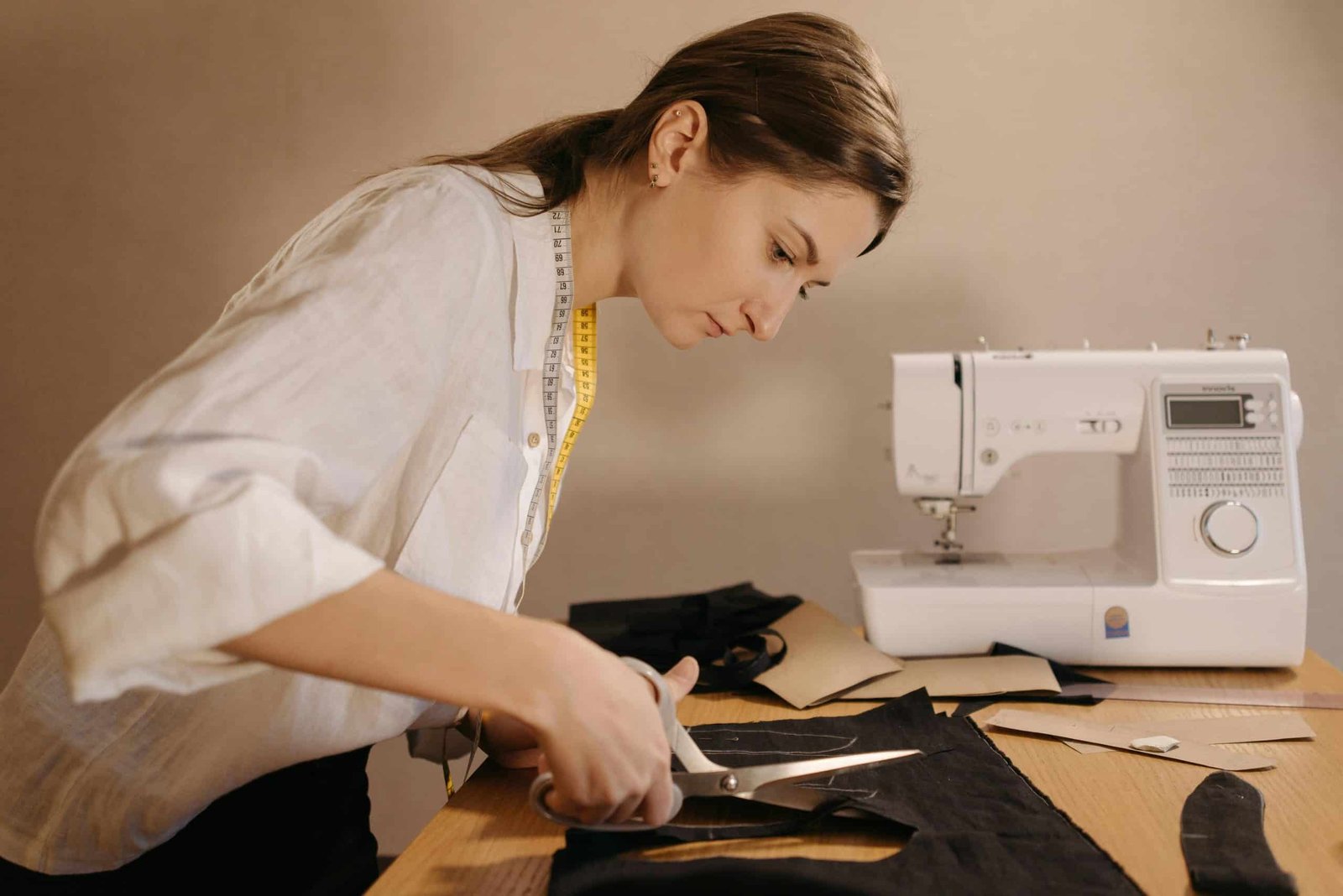
Source: Pexels
Swimsuit designs come to life after the cutting and sewing stages. Here’s a glimpse into how these intricate pieces are transformed:
-
Planning Production
Before cutting and sewing begins, designers decide how many swimsuits of each size and style to produce. This helps ensure efficient manufacturing. Considering your target market and the fit of your designs is crucial when making these decisions.
-
Accurate Cutting
Swimsuit fabrics are often stretchy, so experienced professionals take care during cutting. Single layers are preferred for precision, and rotary cutters ensure clean lines. Swimwear designs often feature unique details or prints, so the fabric’s printed side faces up for perfect pattern placement.
-
Sewing with Stretch
Swimsuit materials need special care when sewn. Pulling or stretching the fabric should be avoided to prevent distortion and loss of stretchiness. When attaching binding or elastic (which are typically smaller than the main pieces), gentle stretching is used to match the length of the main fabric without overstretching.
-
Elastic Essentials
Regular elastic loses its effectiveness quickly in chlorine and saltwater. That’s why high-quality rubber elastic is used in swimwear manufacturing. These elastics offer superior chlorine and saltwater resistance, ensuring your swimsuits last longer.
-
Sample Stages
After cutting and sewing, a sample swimsuit is created. This allows designers to review the fit and make any necessary adjustments. Once approved, a final production sample is created. After final approval, bulk production begins!
Through careful cutting, skilled sewing, and high-quality materials, stunning and functional swimwear is brought to life.
How to cut fabrics for bikinis and one piece
Swimsuit styles call for slightly different cutting approaches. Bikinis and one-pieces may seem similar, but cutting their fabric requires different approaches. While bikinis often have fewer pieces, their smaller size demands extra focus. Some bikini tops might have intricate details or multiple lining pieces that need careful cutting.
One-piece swimsuits, especially those with fancy designs, can have many separate pieces. This includes pieces for the front, back, straps, and lining. Precise cutting ensures all these pieces come together perfectly during sewing.
Mastering these cutting techniques is the foundation for creating stunning and functional swimwear, no matter if it’s a trendy bikini or a stylish one-piece.
Different types of seams for swimwear
Seams are more than just stitching swimsuits together. They play a vital role in comfort, durability, and overall look. Different styles and fabrics require specific seam types for optimal results.
Types of seams for bikinis and one-piece swimsuits
Here’s a breakdown of popular seams for bikinis and one-pieces:
-
Flat seams
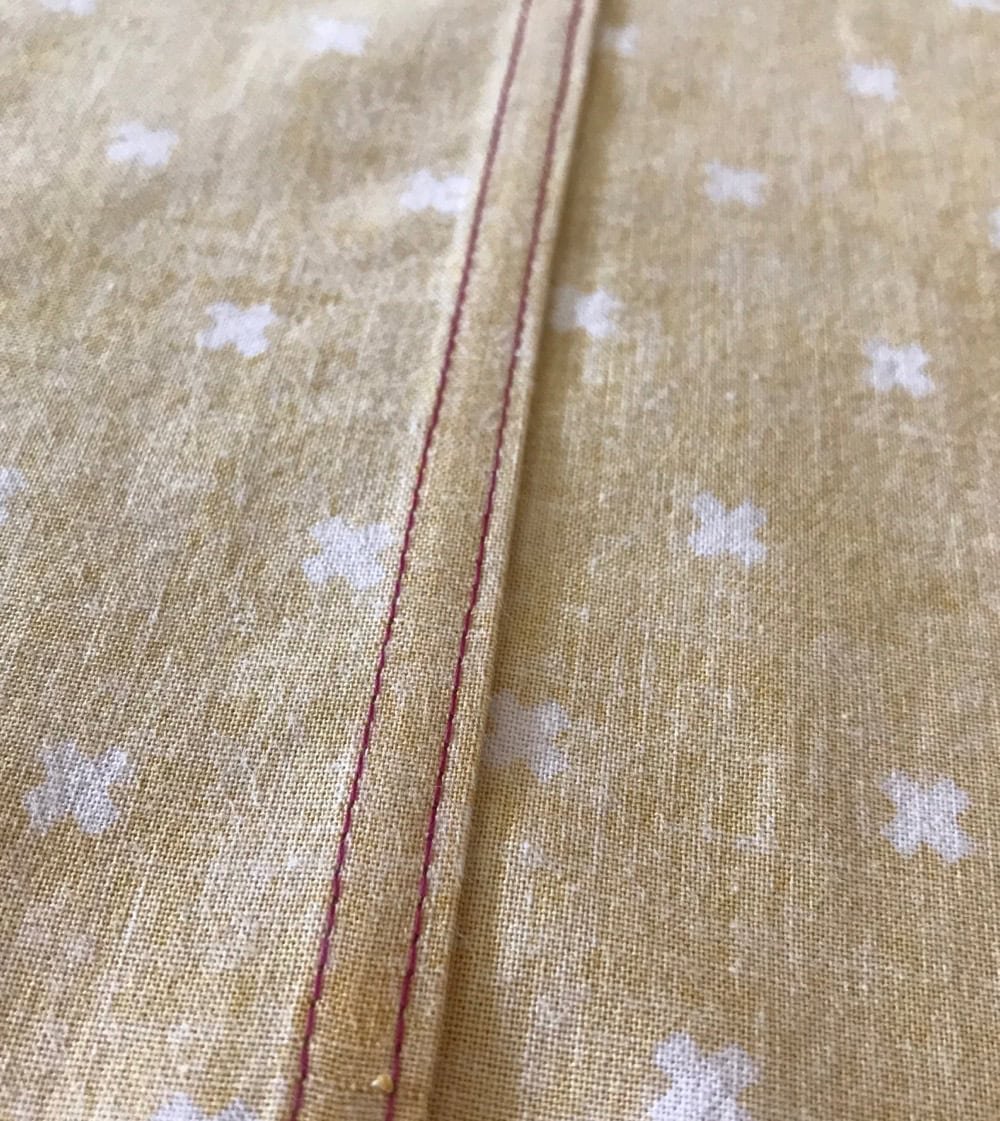
Source: Itch to Stitch
These low-profile seams lie flat for a comfortable feel. Flat seams are your best friend when it comes to comfort. These smooth seams, created with a serger or zigzag stitch, reduce bulk and prevent chafing, letting you move freely.
-
French seams
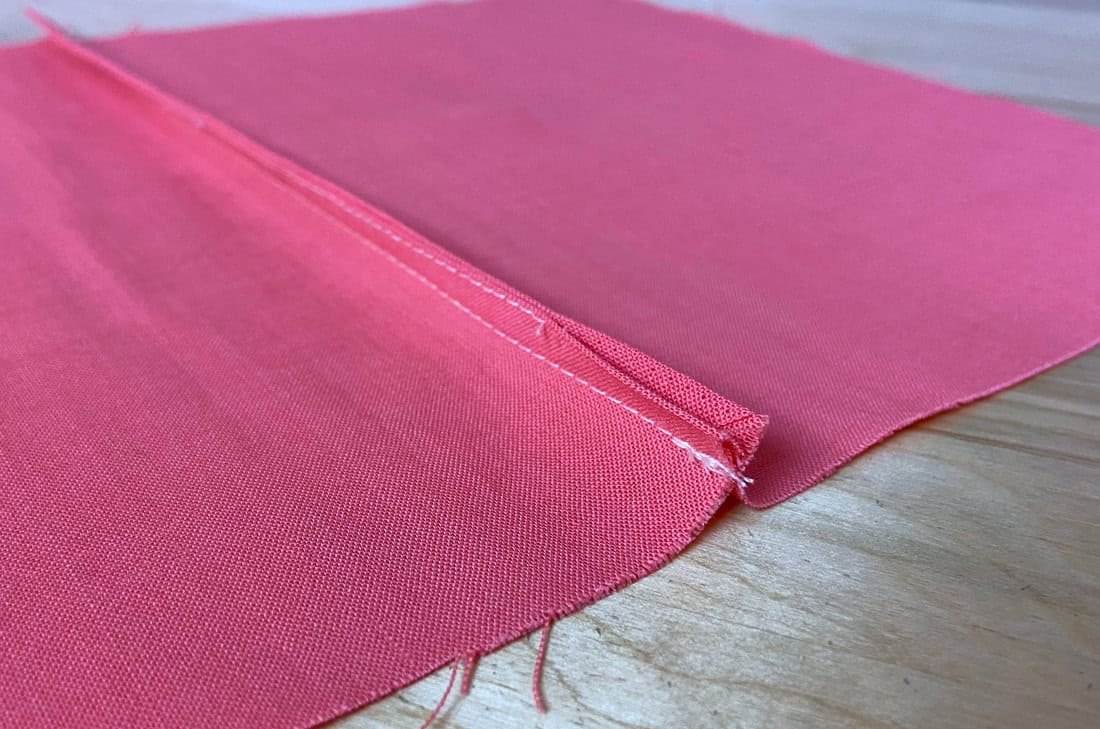
Source: Doina Alexei
French seams are a beautiful and fully enclosed option, hiding raw edges neatly inside. They work well for lightweight swimwear fabrics.
-
Felled seams
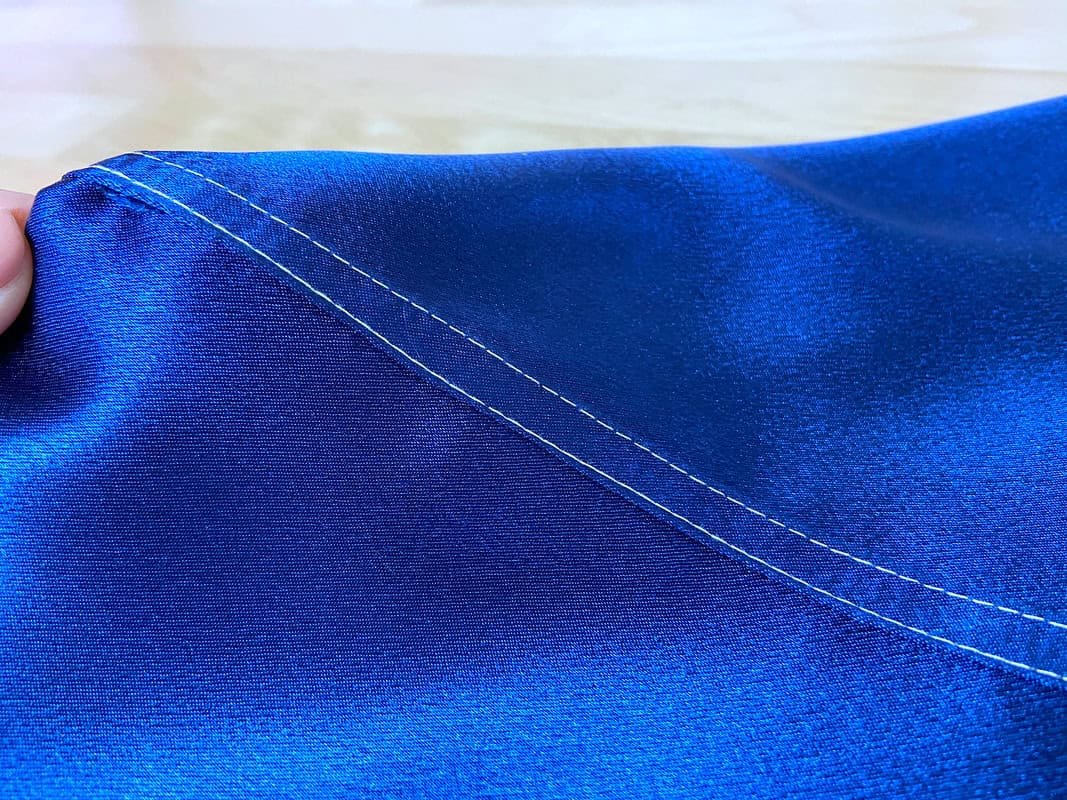
Source: Doina Alexei
Need extra reinforcement? Felled seams are your answer. Strong and secure seams are your secret weapon. Made by folding one seam allowance over the other and stitching it down, these reliable seams ensure your swimsuit can handle all-day beach adventures and countless dips in the pool.
-
Overlocked seams

Source: WeAllSew
Overlocking (serging) is a popular choice for its efficiency. It trims the seam allowance and stitches simultaneously, preventing fraying and creating a clean finish. Especially with stretchy fabrics, using this seam is key.
The right seams and stitches go beyond just construction – they impact everything! Proper seams are the backbone of a high-quality swimsuit, ensuring it becomes a cherished piece for years to come.
Measurement points for swimwear
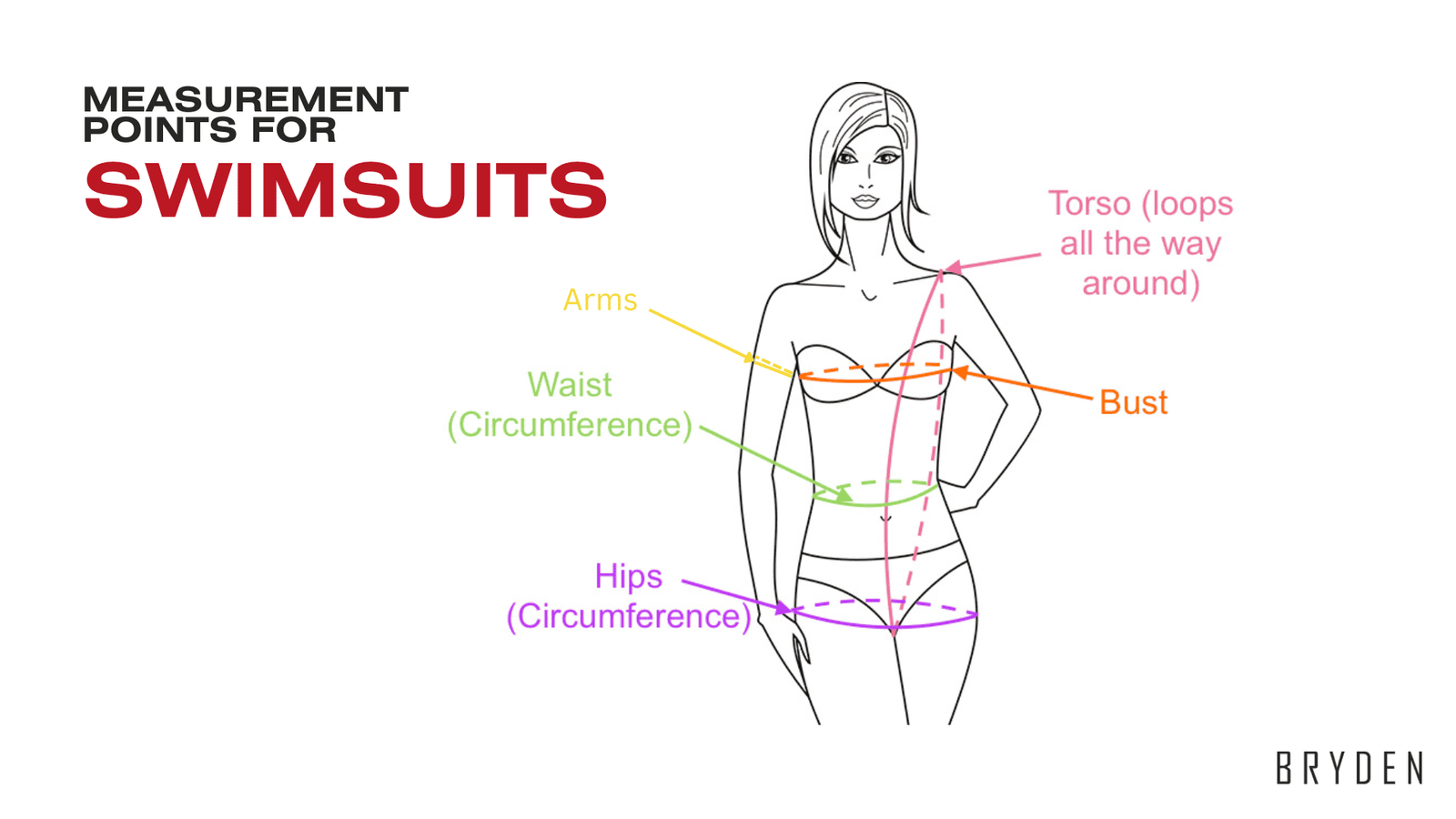
One of the biggest challenges for new swimwear brands? Ensuring a great fit across a variety of body types. Swimsuit sizing can be tricky sometimes, and inconsistent sizing across brands frustrates customers.
The secret weapon? Understanding key measurement points. Accurate measurements allow designers to create size charts that translate into comfortable, supportive swimwear.
Measurement points for bikinis and one-piece swimsuits
Here’s a breakdown of the essential measurement points for both bikinis and one-pieces:
-
Torso
This measurement, taken from the highest shoulder point, down the body, under the crotch, and back up, ensures the swimsuit offers proper length and avoids any uncomfortable bunching.
-
Chest/Bust
A well-fitting top requires an accurate bust measurement taken around the fullest part. Getting this right ensures the swimsuit provides adequate support and avoids any gaping or digging in.
-
Waist
Measuring the narrowest part is crucial for a secure fit in both bikinis and one-pieces. A good waist measurement prevents the suit from riding up or down during wear.
-
Hips
The fullest part of the hips and buttocks needs to be considered for the bottom portion of the swimsuit. An accurate hip measurement guarantees a comfortable and flattering fit.
-
Arms
Long-sleeve swimsuits or rash guards require an arm measurement, taken from shoulder end to wrist, to ensure proper mobility and prevent restricted movement.
The art of printing
Bold prints, eye-catching designs – swimwear offers a unique canvas for your creativity! Explore these popular printing techniques to elevate your swimwear line:
Common printing techniques used for swimwear
1. Sublimation Printing
 Source: Sublitech
Source: Sublitech
Heat and pressure come together in a process called sublimation printing. This popular method transfers vibrant designs from special paper directly onto the fabric. Perfect for intricate details and all-over coverage! Plus, most swimwear fabrics contain polyester, which works well with sublimation.
Insider Tip: Sublimation printing allows for multiple designs and logos on one garment, unlike some traditional methods.
2. Heat Transfer Vinyl (HTV)
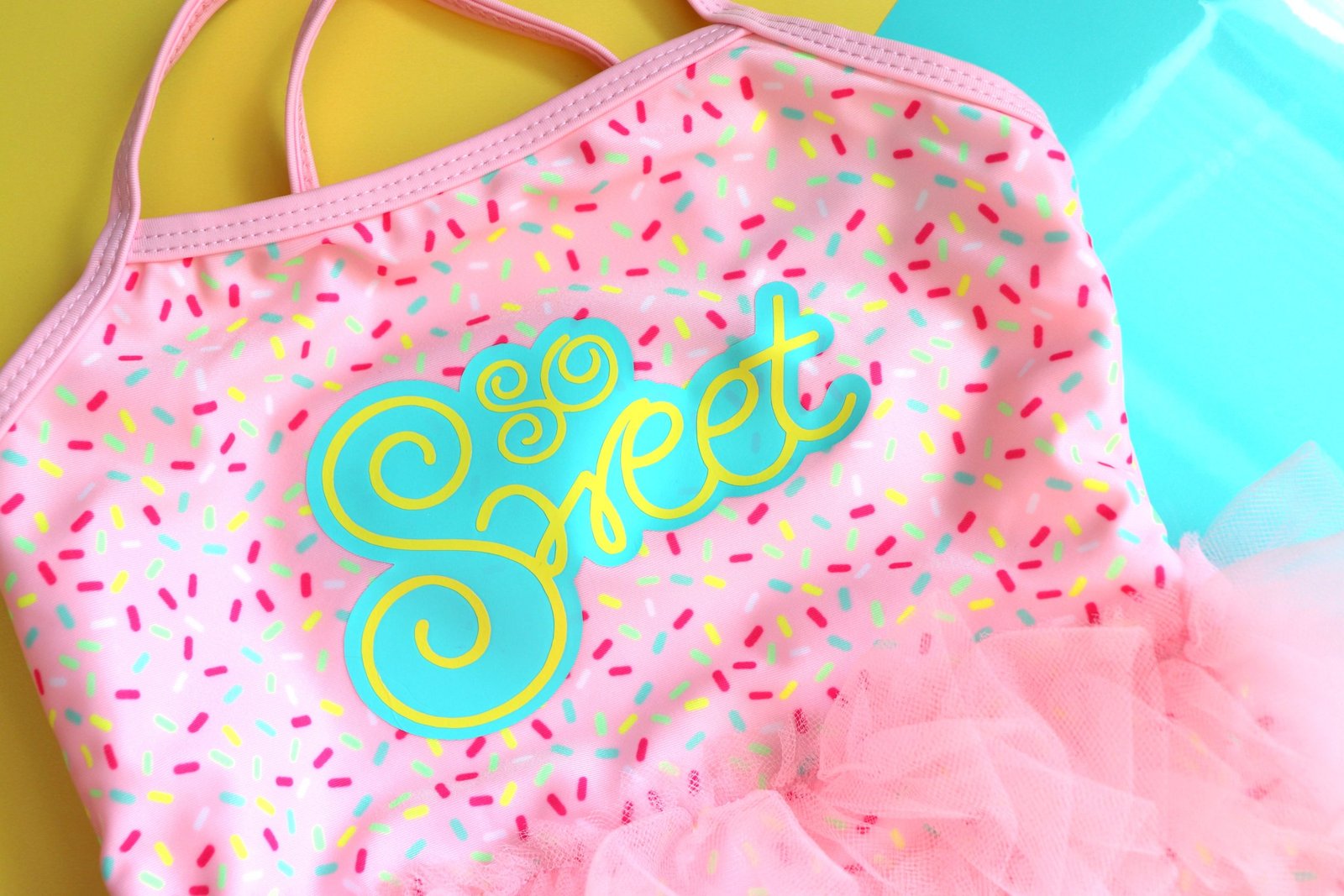 Source: Expressions Vinyl
Source: Expressions Vinyl
Want eye-catching designs on those tricky swimsuit straps and areas? HTV is your solution! This special vinyl stretches with the fabric and bounces back, ensuring a perfect fit.
3. Direct Transfer Film (DTF)
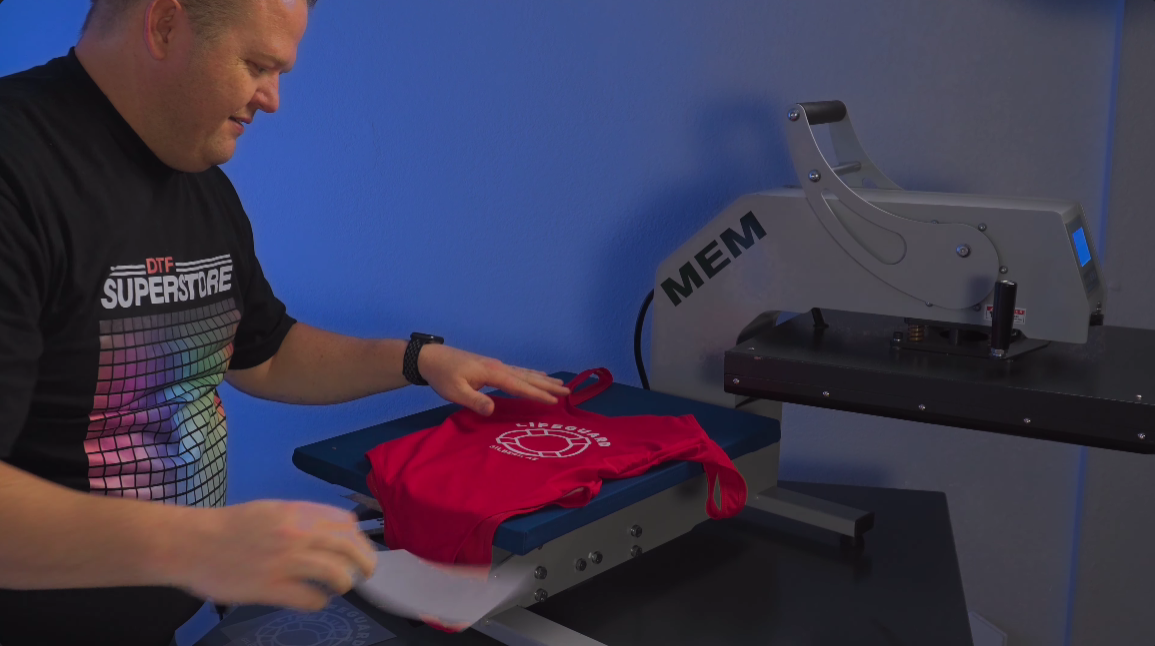 Source: DTF Superstore
Source: DTF Superstore
Durability is key for swimwear! DTF printing offers vibrant, customizable colors and is perfect for the outside of the fabric. It’s not recommended for textured fabrics, but it’s a great option for swimwear labels too.
4. Screen Printing
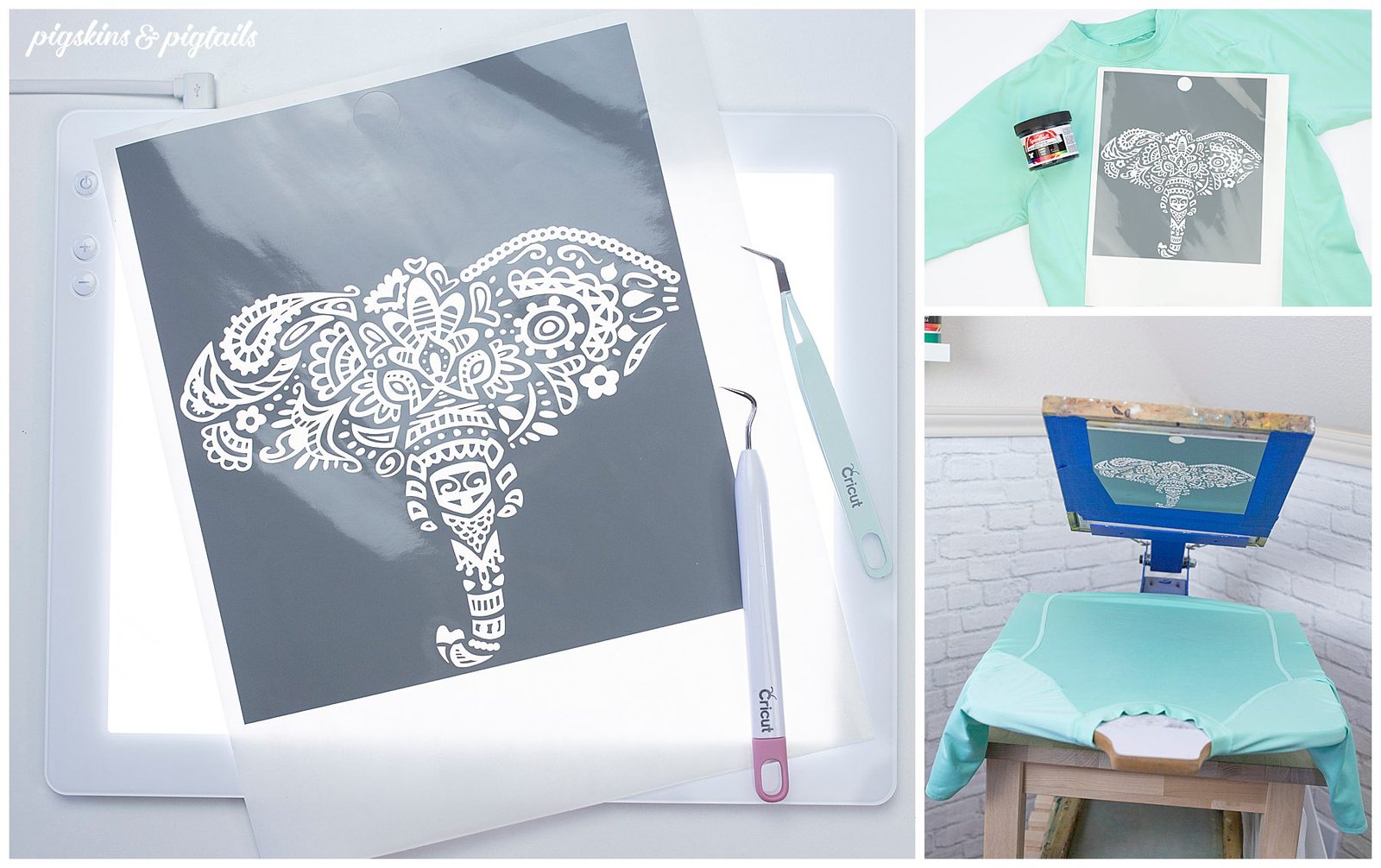 Source: Pigskins & Pigtails
Source: Pigskins & Pigtails
For swimwear that makes a statement, screen printing reigns supreme. This technique delivers vibrant, long-lasting designs that won’t fade after countless dips in the pool. Screen printing delivers bold designs on swimwear fabrics (think spandex and polyester), but requires some extra finesse. Your customers can rock bold, eye-catching prints wash after wash!
Selecting the best printing method depends on your vision. Consider complexity, color vibrancy, and durability. Budget and desired outcome are also key factors.
Different types of garment washing for swimwear (bikinis, one-piece)
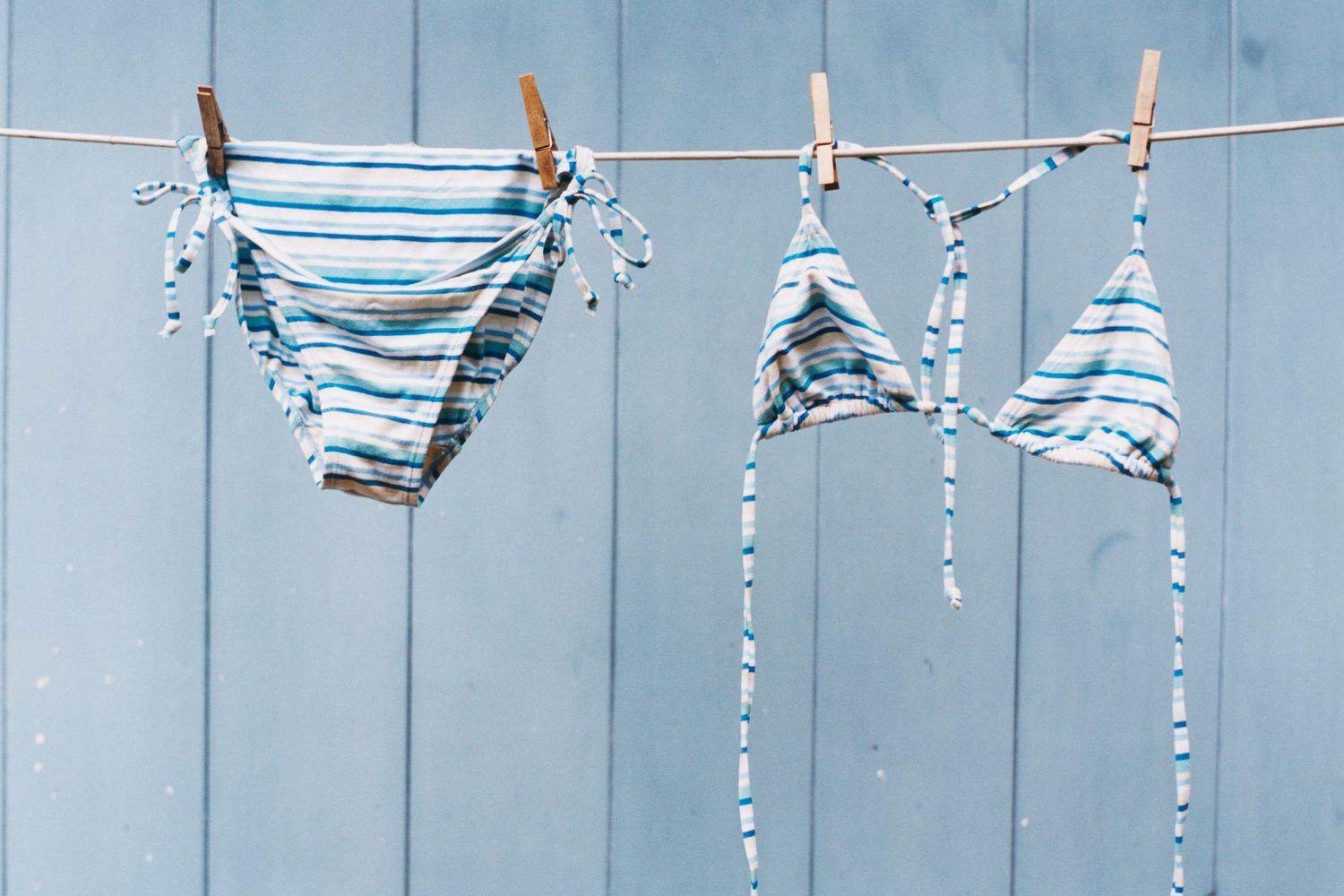
Source: Martha Stewart
Swimwear needs special care to stay vibrant and functional season after season. While garment washing is a broad term used in apparel manufacturing for various finishing techniques, here’s why a gentle wash process is ideal for swimwear:
-
Gentle on Fabric, Gentle on Skin
Spandex and lycra are delicate fabrics. Harsh chemicals and rough washing techniques often used in some garment washes can damage their elasticity and fit. A gentle wash with mild detergents avoids these harsh processes, keeping your designs looking and feeling great.
-
Keeping Skin Happy
Swimwear shouldn’t irritate! Gentle washing keeps harsh chemicals at bay, minimizing the risk of skin issues for your customers.
-
Eco-Conscious Choice
Swimwear often takes a dip in oceans and lakes. Harsh chemicals used in some garment washing techniques can leave residues on the fabric. These residues can then contaminate the water when washed off, harming the environment. A gentle wash minimizes this risk, making it a responsible choice.
-
Skip the Distressing Techniques
Skip trendy denim washes like stonewash or acid wash – they’re not for delicate swimwear fabrics. These methods use strong chemicals and rough processes that damage delicate swimwear fabrics and pose a risk to the wearer and the environment.
Fabric dyeing technique for swimwear

Source: Pexels
Fabric dyeing lets you create unique, colorful swimwear! Swimwear fabrics, like many materials, can absorb dyes, allowing for vibrant color changes.
Fabric dyeing technique for swimwear
Here’s a look at some popular dyeing techniques for swimwear:
-
Immersion dyeing

Source: Roxy
Want a classic, solid-colored swimsuit? Immersion dyeing is your answer! The swimsuit gets a full-body dunk in a dye bath, and the longer it stays submerged, the deeper the color becomes. Simple yet stunning!
-
Ombre dyeing
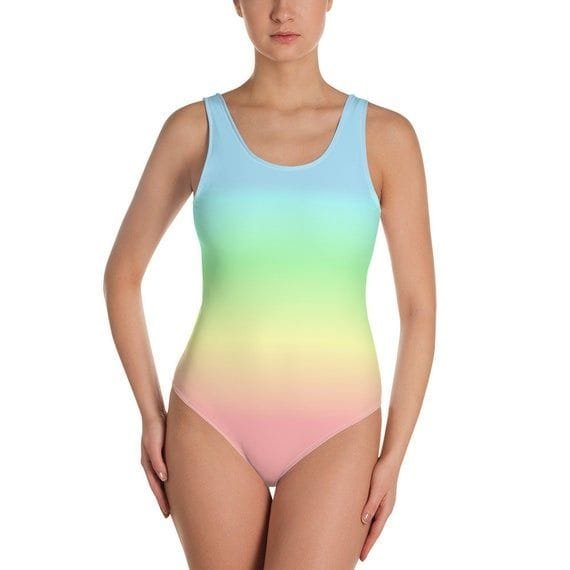
Source: Pinterest
Create a stunning ombre effect with a dip-dye technique! This playful method involves partially submerging the swimsuit in dye for a short time, then slowly lifting it out. The result? A beautiful gradient effect, perfect for a touch of trendy style. This creates a color transition from dark to light or vice versa.
-
Marbling
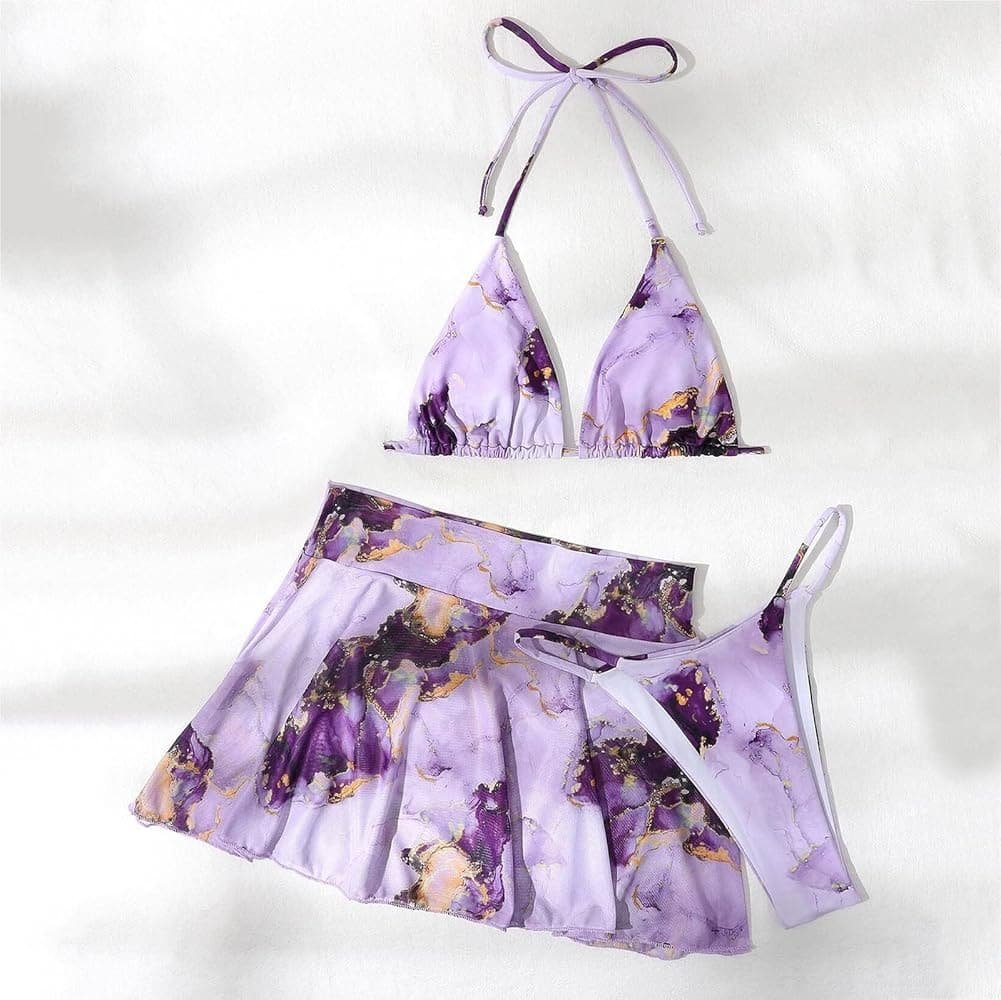
Source: Amazon
For a mesmerizing marbled look, this technique involves floating drops of various dyes on a water surface. The colors are gently swirled, and the swimsuit is dipped to capture the unique patterns that emerge.
-
Brush dyeing
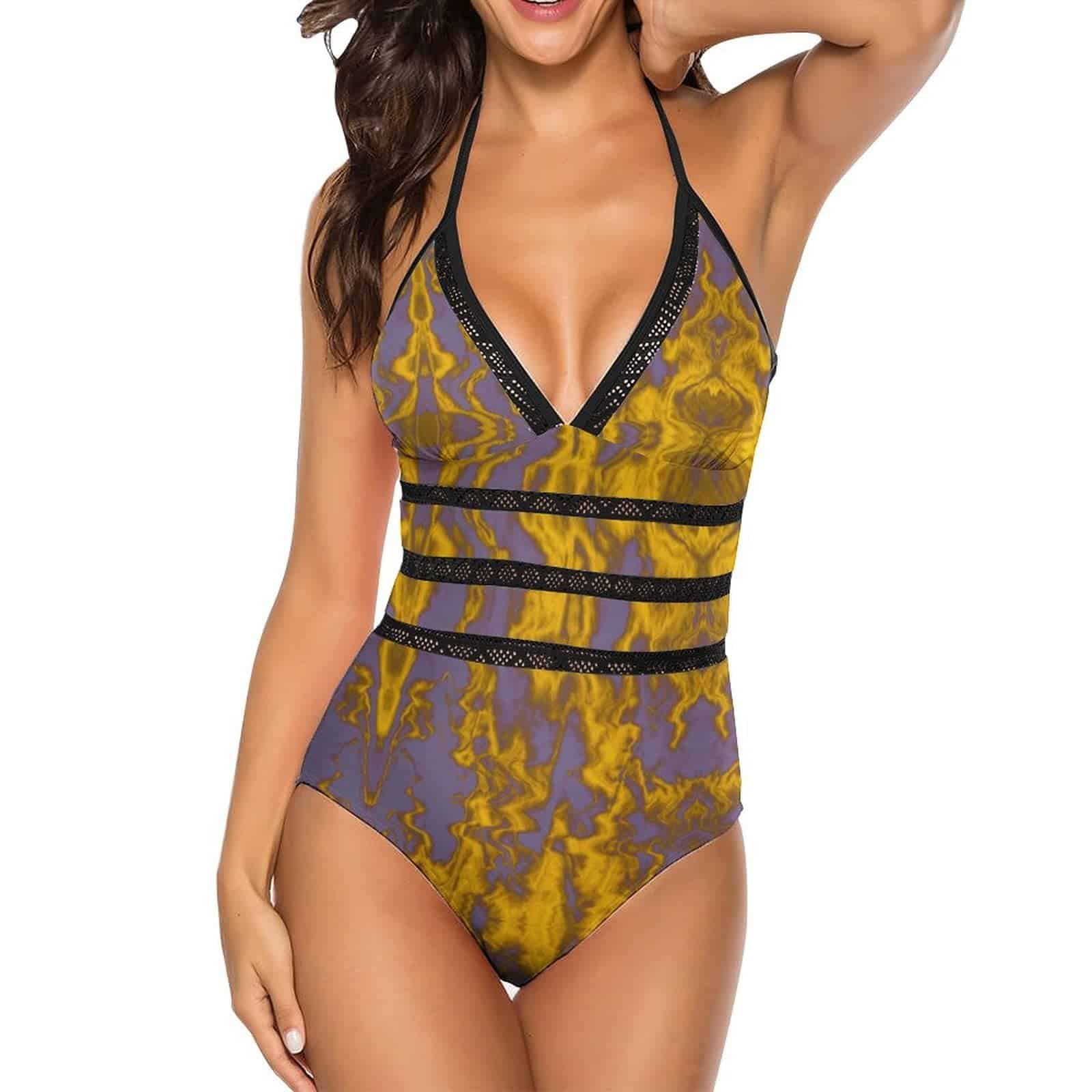
Source: Amazon
Brush dyeing offers exceptional control for intricate details and designs. This method allows for the direct application of dye onto the fabric using paintbrushes or sponges, perfect for creating logos, patterns, or other creative flourishes.
The best dyeing technique depends on the desired outcome for your designs. Do you envision solid colors, captivating gradients, or unique patterns? By exploring these options, you can create one-of-a-kind swimwear that reflects your brand’s style and sets you apart!
Quality control measures

Source: Pexels
Swimwear should flatter every body type and feel comfortable all day long. Here’s how meticulous quality control measures ensure your designs translate into perfectly fitting swimwear:
From Fabric to Form
And it all starts with the fabric! Not all fabrics are created equal for swimsuits. The key to a comfortable and flattering suit lies in the foundation: high-quality materials. Look for fabrics that drape beautifully, retain their shape, and offer the perfect amount of stretch. Technically accurate patterns are then meticulously crafted and tested to ensure proper sizing and a flattering silhouette across all designs.
Samples & Size Consistency
Prototypes, or “samples,” are created to test the fit and functionality of each design. These samples are rigorously evaluated by experienced fit specialists to identify any areas needing adjustment. Developing a comprehensive size chart is also crucial. This chart ensures consistent sizing across all garments, so every customer can find their perfect fit, regardless of size.
Seams that Support & Final Touches
Skilled sewing teams ensure seams are constructed with the right stitch type and tension for optimal strength and comfort. This minimizes chafing and ensures the swimsuit holds its shape beautifully. Each finished garment then undergoes a thorough inspection for any flaws in stitching, construction, or hardware. This final check guarantees a flawless product reaches your customers.
Prioritizing these quality control measures and be confident that your swimwear delivers exceptional fit, comfort, and style. This translates into happy customers who love wearing your designs and feeling their best poolside!
Packaging and branding
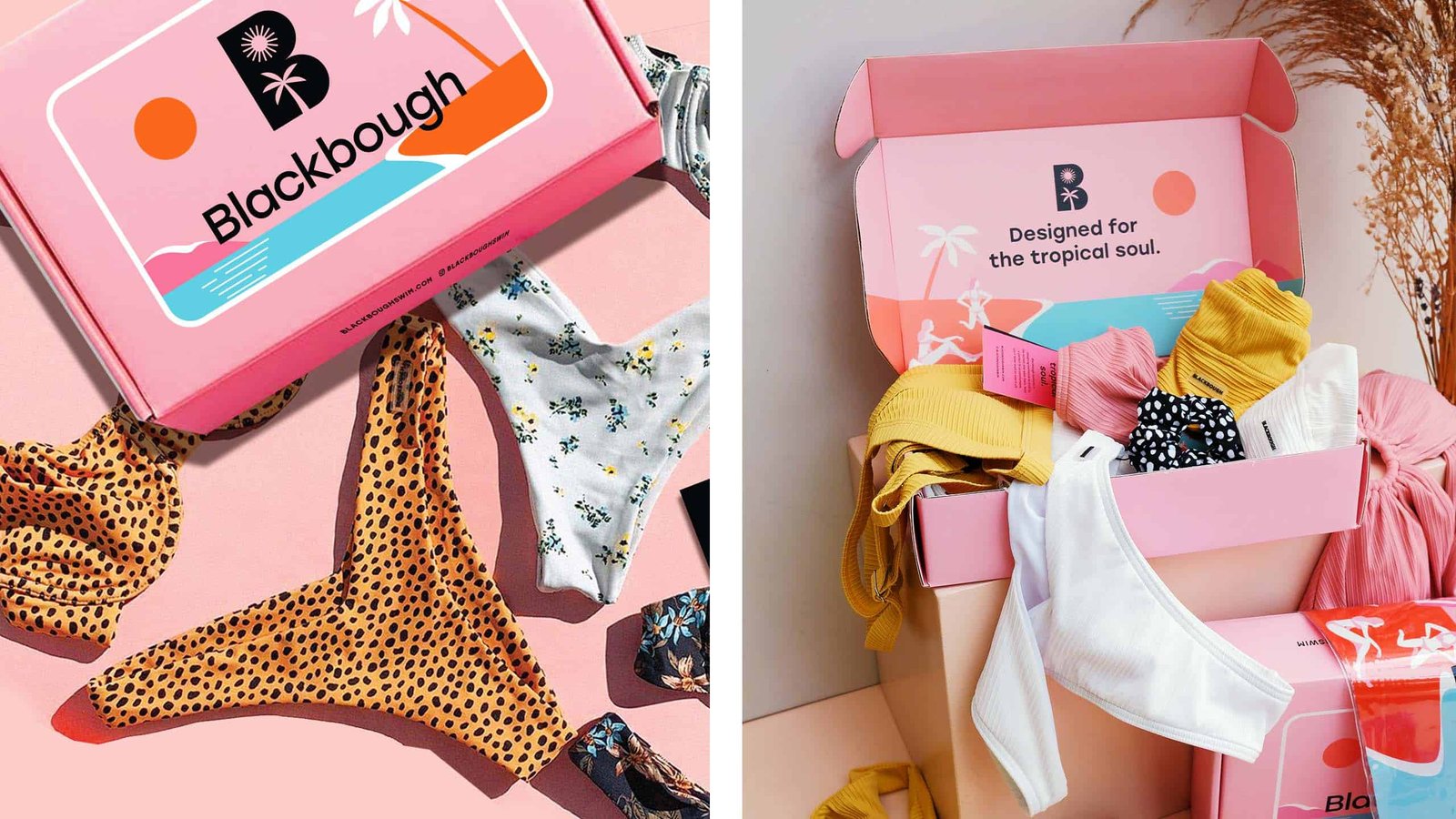 Source: Serious Studio
Source: Serious Studio
Great swimwear deserves a great presentation! Here’s a look at packaging and branding options to elevate your designs:
Keeping it Protected
Swimwear needs to arrive clean and well-protected. Here are a few packaging choices:
-
PVC Plastic or Plastic Zipper Pouch
This is a common option and is both reusable and durable. You can even personalize it with your logo or other branding elements.
-
Biodegradable Bags
Eco-conscious customers love these! They reduce your carbon footprint by breaking down after use. Plus, they keep your suits protected during storage and sales.
-
Drawstring or Zipper Pouch
These pouches, made from cotton or mesh, add a touch of luxury while keeping your swimwear safe.
Label Love
Even with limited fabric space, you can still showcase your brand with creative labeling:
-
Inside or Outside Labels
Choose a location that works best for your design. Custom shapes are available for a unique touch.
-
Size Labels
Don’t forget these! Consider size labels for customer convenience. Custom shapes and designs allow you to fully personalize your brand. They’re essential for a perfect fit.
Standing Out with Branding
-
Hang Tags
These little cards are perfect for physical stores. Include your logo, website, social media info, or a short mission statement. Customize everything from shape to text for a branded experience.
Hygiene & Trust
-
Hygiene Liners
They keep the bottom clean and assure customers they’re getting a brand new item. Choose from plastic, recycled materials, or eco-friendly kraft paper. Ask your manufacturer about available shapes and sizes.
Pro Tip!
Developing your packaging and branding early, during the sampling stage, saves time later. This allows you to launch and market your swimwear line with a cohesive and polished presentation.
Conclusion
Finding the perfect fit for your swimwear line can feel like finding the perfect swimsuit – exciting and empowering! This guide has explored the essential elements, from understanding measurement points to the dazzling world of printing techniques.
Now that you’re equipped with this knowledge, you’re ready to create swimwear that flatters every form and makes a splash. Knowing the power of high-quality fabrics is key to creating showstopping swimwear. We offer a wide range of options to bring your designs to life. Contact us today and let’s collaborate on finding the perfect fabrics for your swimwear line!

